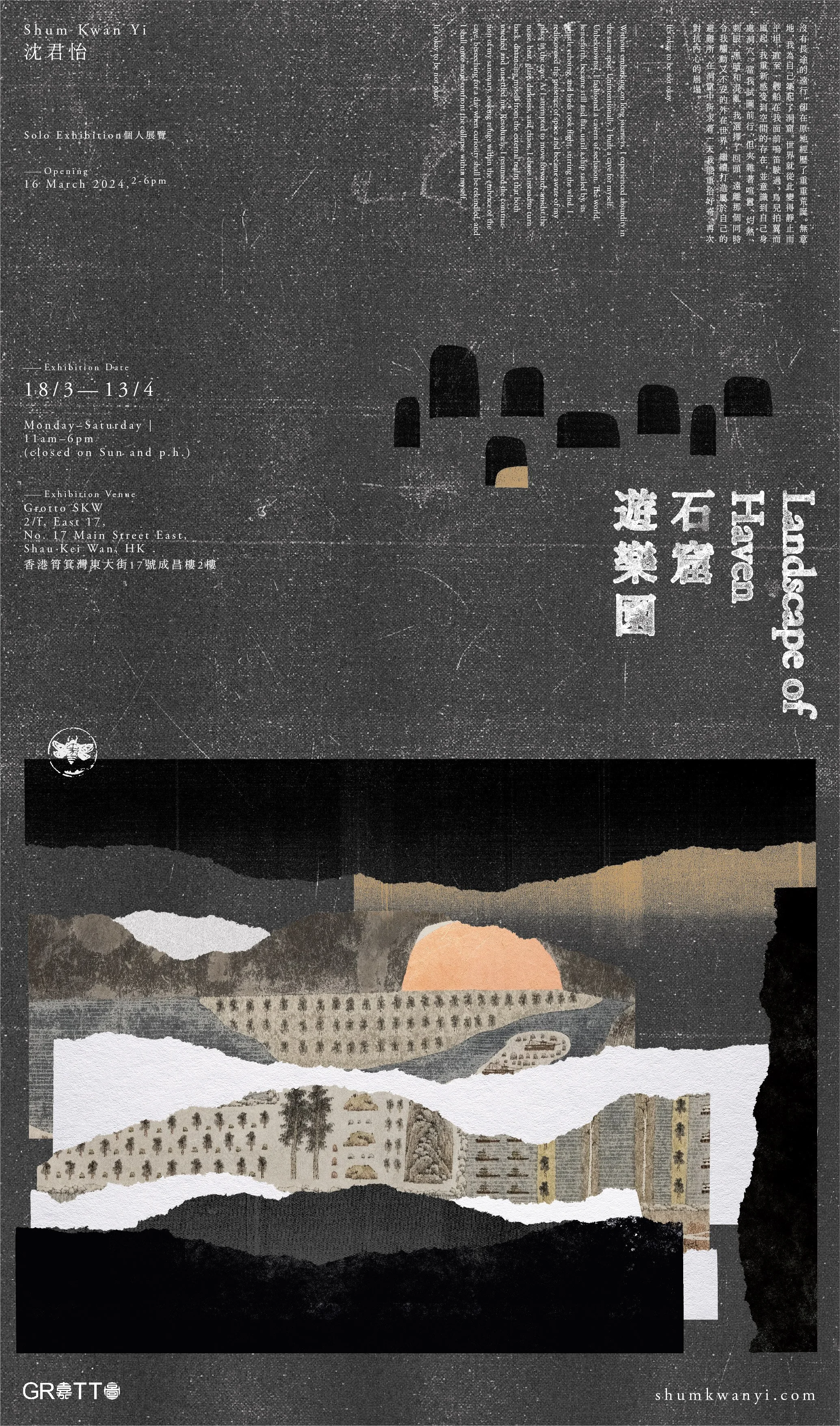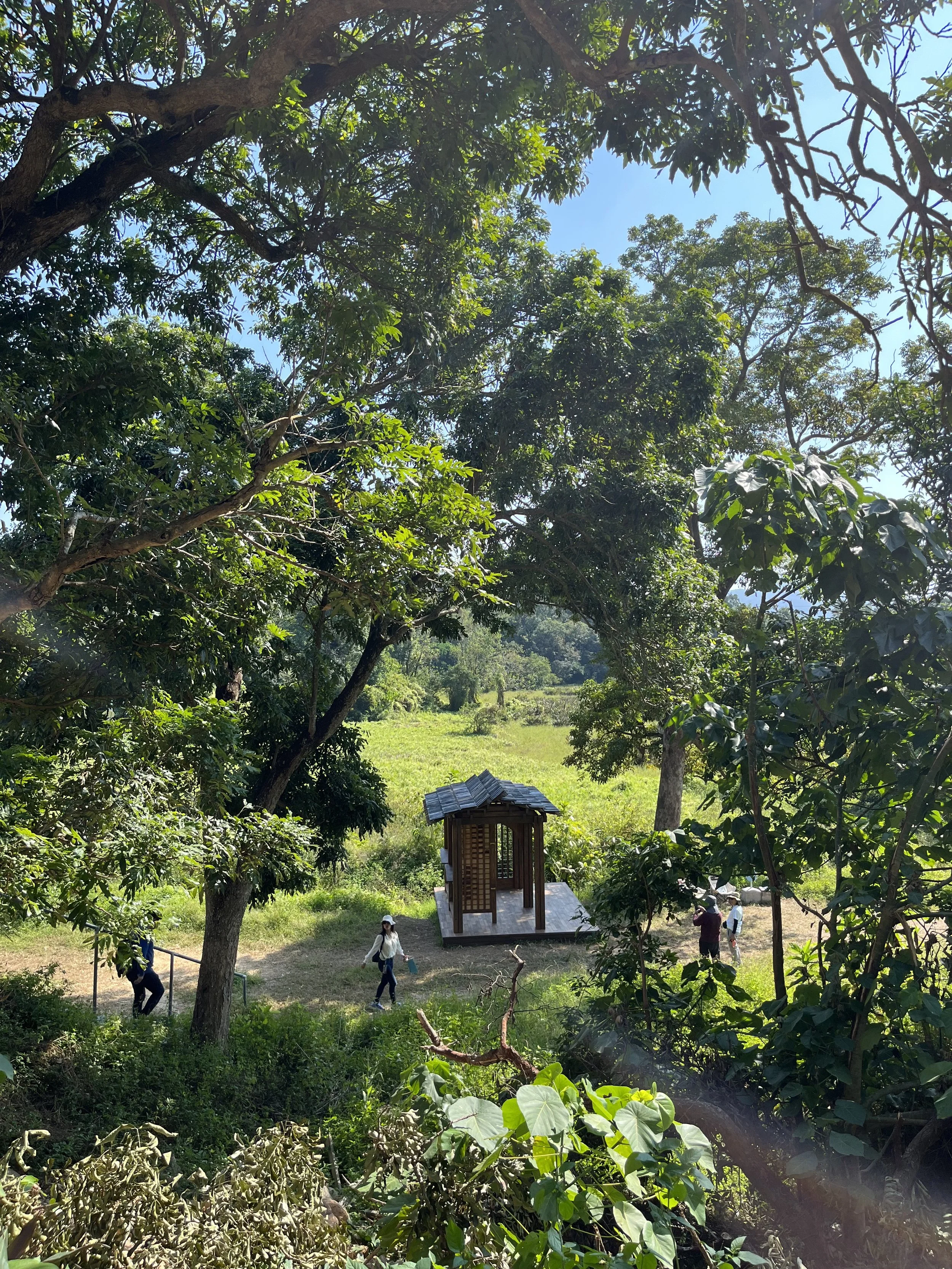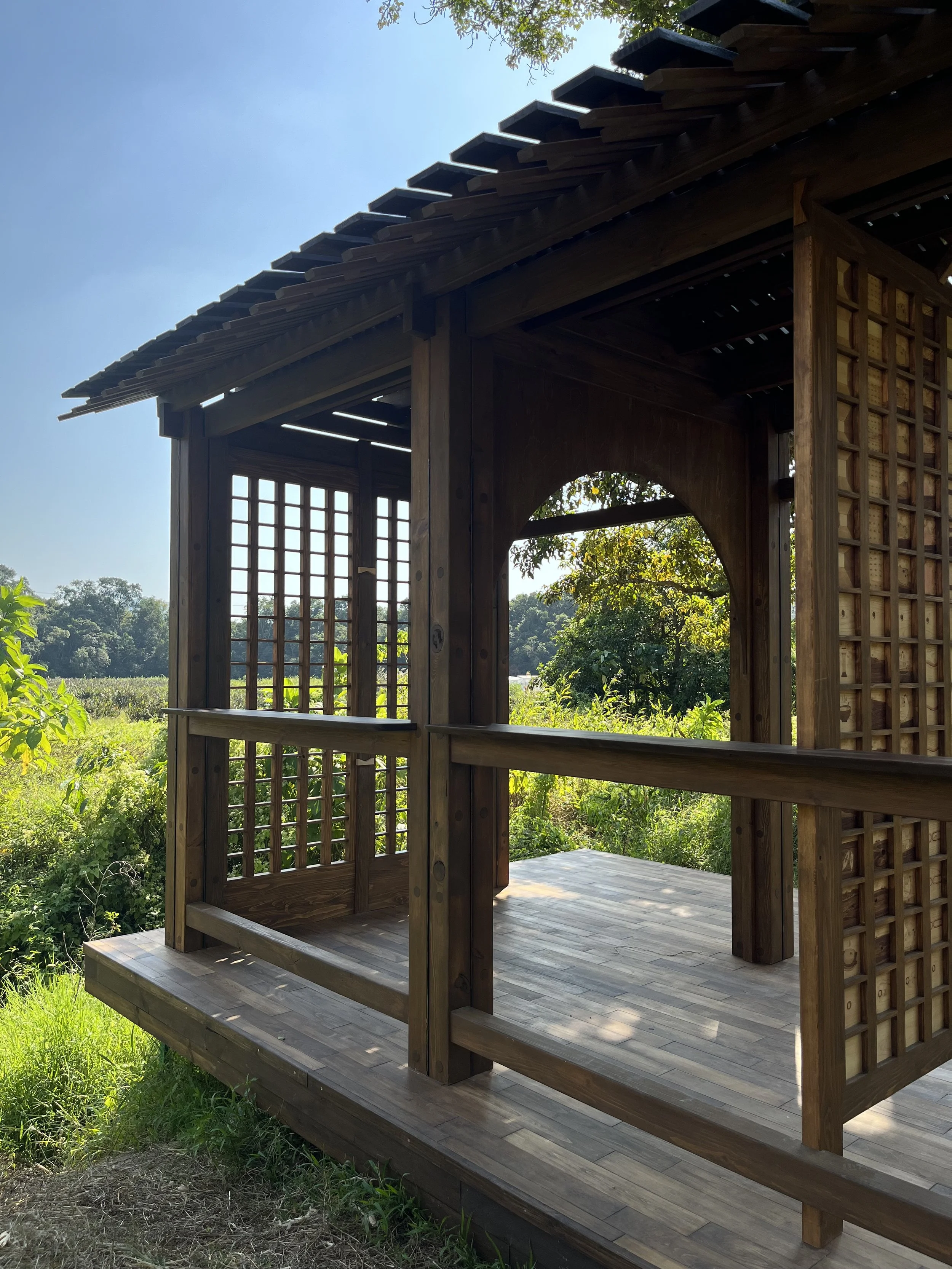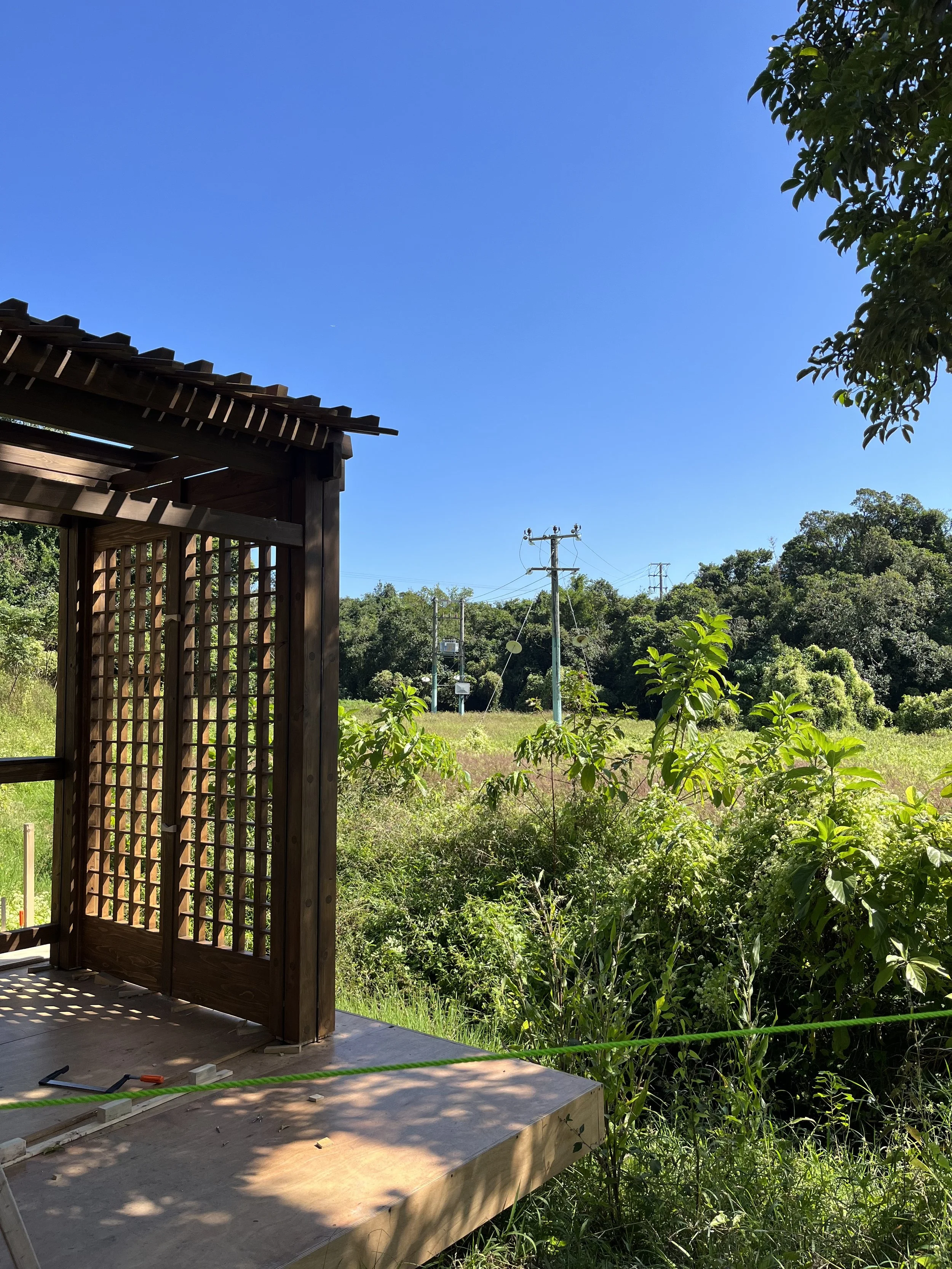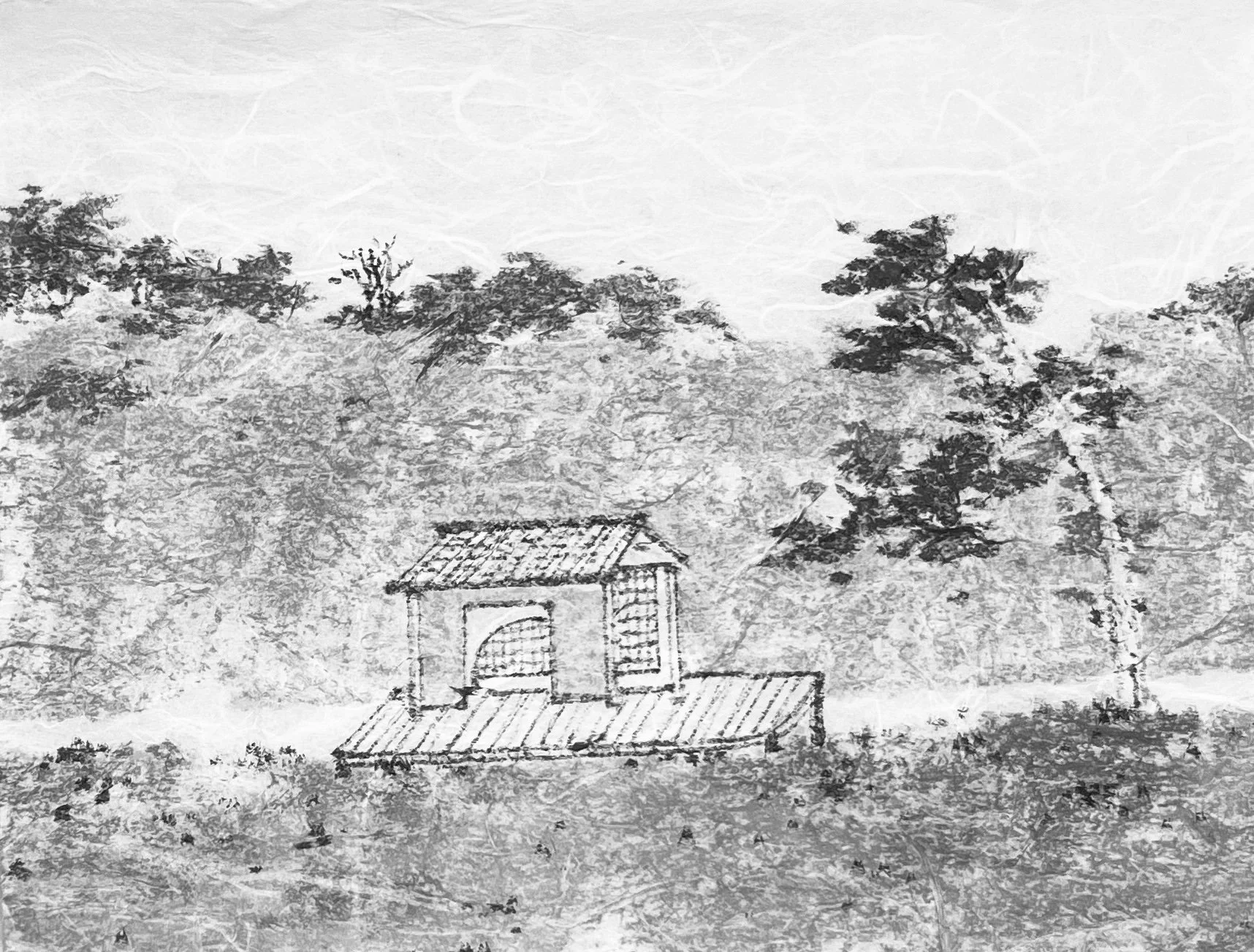Solo Exhibitions 個人展覽
2024 | Landscape of Haven 石窟遊樂園 | Grotto SKW 嘉圖現代藝術
2023 | The Inhabitant Islets 荒島 | Grotto Fine Art 嘉圖現代藝術
2022 | The Unbearable Lightness 不能承受的輕 | Grotto SKW 嘉圖現代藝術
2020 | Mountains Whispers in the Town 山城絮語 | PMQ 元創方
2019 | Clouds Say,“ 雲霧說:「 | Grotto Fine Art 嘉圖現代藝術
In-site art projects 社區藝術
2025 | The Whispers of Stone 石之耳語 | 越後妻有大地藝術祭香港部屋 Hong Kong House at Echigo
2024 | Is Kuk Po an Island? 谷埔喺個島?| Kuk Po Common 谷埔客廳
2023 | Sai Kung Hoi Arts Festival 西貢海藝術節 | Yim Tin Tsai 鹽田梓
2021 | Lamma Mia 南丫說:| Sok Kwu Wan, Lamma Island 南丫島索罟灣
Selected Group Exhibitions 聯合展覽
2025 | Grace Period 未介之時 | Hive Becoming|Hive Becoming 蜂巢·生成| Shanghai 上海
2025 -2018 | Art Basel Hong Kong 香港巴塞爾藝術展 | Hong Kong Convention and Exhibition Centre 香港會議展覽中心
2025 | Paperscape 紙象 | Koo Ming Kown Exhibition Gallery 顧明均展覽廳
2025 | On-site 廠景 | Jockey Club Creative Arts Centre, L2 Terrace 賽馬會創意藝術中心L2平台
2024 -2016 | Ink Asia 水墨博藝 | Hong Kong Convention and Exhibition Centre 香港會議展覽中心
2023 | COUPLET PAIR REBUS The Principle of Cause and Effect in Art 對聯 搭配 畫謎 — 藝術中的因果法則 | University Museum and Art Gallery 香港大學美術博物館
2021 | The Drawing Exhibition | Koo Ming Kown Exhibition Gallery 顧明均展覽廳
2021 | The Nest 溫床 | WURE AREA 回異空間
2021 | Art Basel Hong Kong 2021 香港巴塞爾藝術展 2021 | Hong Kong Convention and Exhibition Centre 香港會議展覽中心
2021 | The Unsung 韌生 | JC Contemporary 賽馬會藝方
2021 | FUTURE MEMORIES. Utopia Dystopia Nature 未來的回憶:烏托邦。反烏托邦。大自然 | Singing Waves Gallery, L3, Run Run Shaw Creative Media Centre 邵逸夫創意媒體中心3樓濤聲藝廊
2018 | The 1st Guangdong-Hongkong-Macao Greater Bay Area University Art Exhibition and the 3rd Biennial Academy Awards of Guangdong College Art Works 首屆粵港澳大灣區高校美術作品展暨第三屆廣東省高校美術作品學院獎雙年展 | The Art Museum of Guangzhou Academy of Fine Arts 廣州美術學院大學城美術館
2018 | Hong Kong Baptist University Academy of Visual Arts BA (VA) Graduation Exhibition 香港浸會大學視覺藝術本科畢業展 | Academy of Visual Art 啟德校園
2017 | Nagoya Zokei Univeristy of Art and Design 2017 D gallery Exhibition 名古屋造形大学 D gallery 2017企畫展 | Nagoya Zokei Univeristy of Art and Design, Japan 名古屋造形大学
石之耳語 The Whispers of Stone
張瀚謙|沈君怡
Chris Cheung (h0nh1m) |Sim Shum Kwan Yi
展覽介紹 Exhibition Statement
「在日本越後妻有,我們找到了會說話的石頭。」
「石之耳語」的概念源自日本的水石文化,以及古代晉國「魏榆言石」的典故。作品以輕聲呢喃的方式,訴說越後妻有與香港兩地那些難以明言的故事。晉國大臣師曠曾以「石何故言?」之問,用會說話的石頭向君王傳達百姓的聲音。兩千多年後,藝術家張瀚謙和沈君怡在越後妻有的信濃川河邊,也發現了「會說話的石頭」。他們以新潟縣的川流之石為媒介,結合聲音、燈光和繪畫,細訴兩地那些難以直接表達的故事。這些被壓抑的情感和記憶,可能是居民對未來的期盼,也可能是歌詞中隱藏的歷史。現在,邀請遠道而來的觀眾,靜靜細聽川石的耳語。
On the Echigo Tsumari Art Field, we found the stones that speak.
The Whispers of Stones is inspired by the suiseki (水石) culture in Japan and ancient Weiyu stone legend in the Zhou dynasty. Like murmurs carried by the wind, the work reveals unspoken narratives connecting Echigo-Tsumari and Hong Kong. The concept comes from the allusion of “a talking stone” back in 534 BC in the Jin state of the Zhou dynasty. The story reflects stones becoming a metaphor and symbolic meanings that words could not be told.
The artworks echo a 2,000-year-old dialogue when Jin dynasty statesman Shi Kuang posed his profound question, "Can stones truly speak?" to channel the people's unheard voices. After more than 2,500 years today, Hong Kong artists Chris Cheung (h0nh1m) and Sim Shum Kwan Yi discover the speaking stones along the Shinano River side.
Through an immersive interplay of stone, sound, light and painting, suppressed emotions find expression. Local yearnings and secrets inside lyrics, once locked in silence, now emerge in stones’ whispers—inviting visitors to lean and listen.
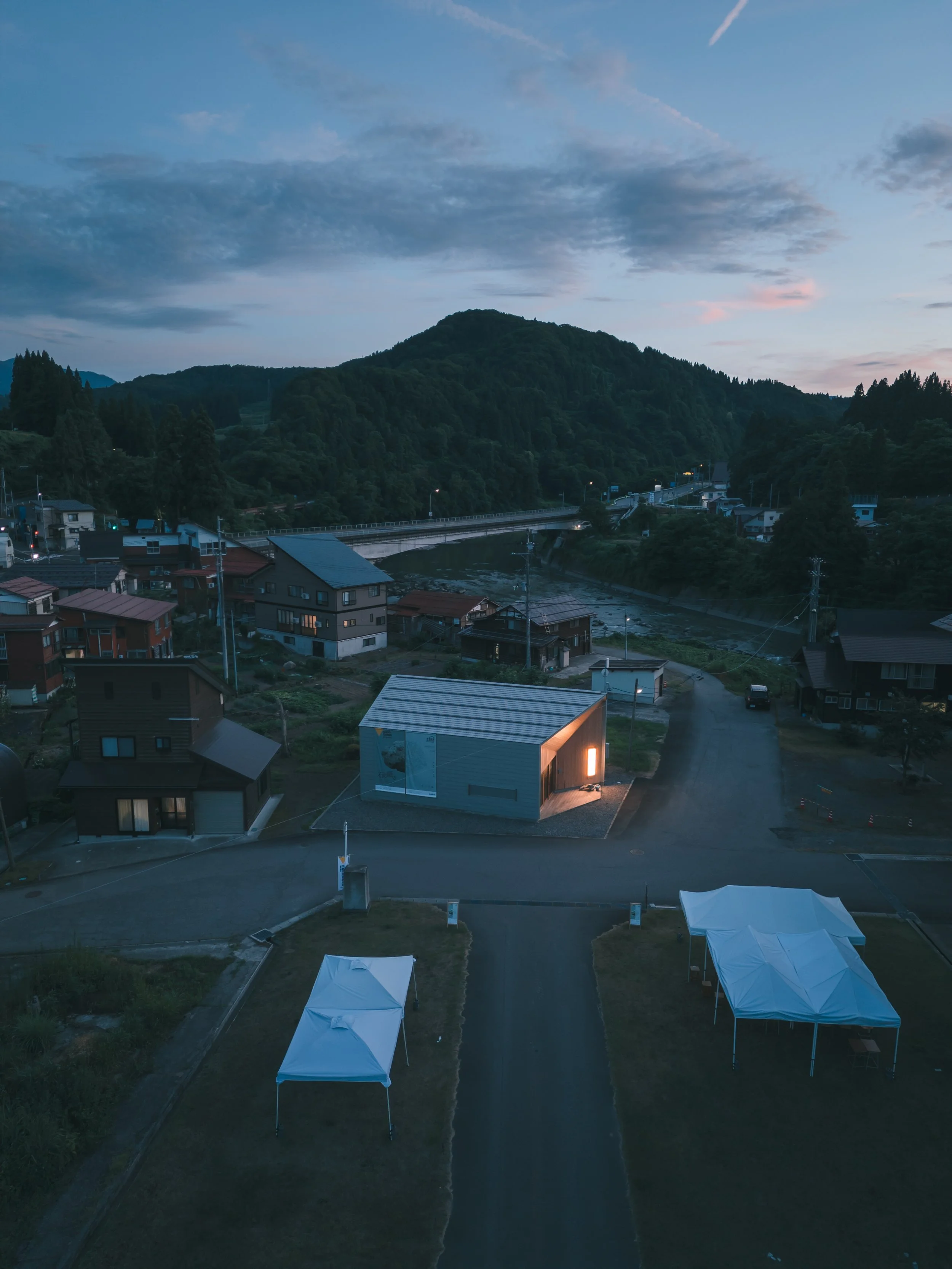
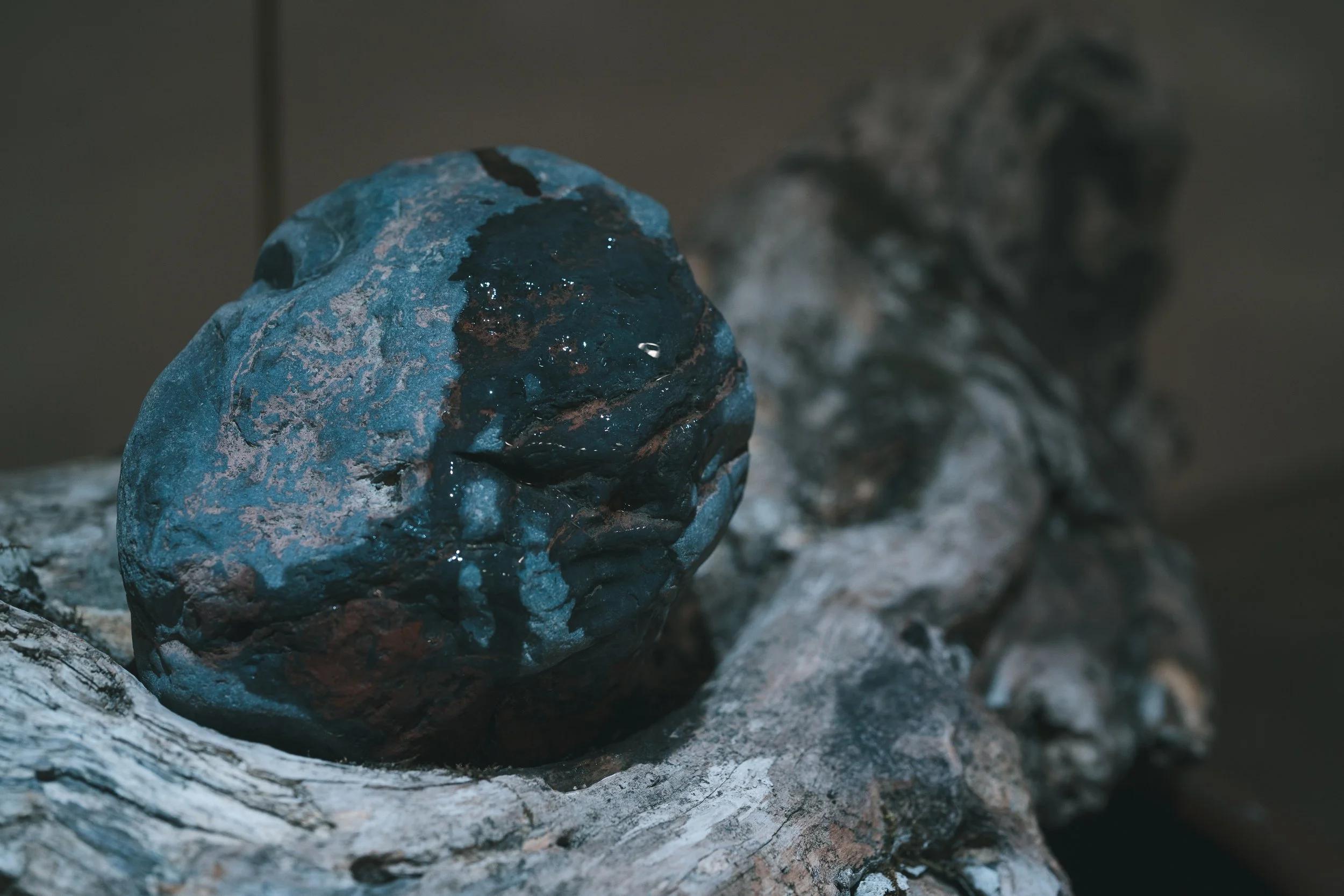
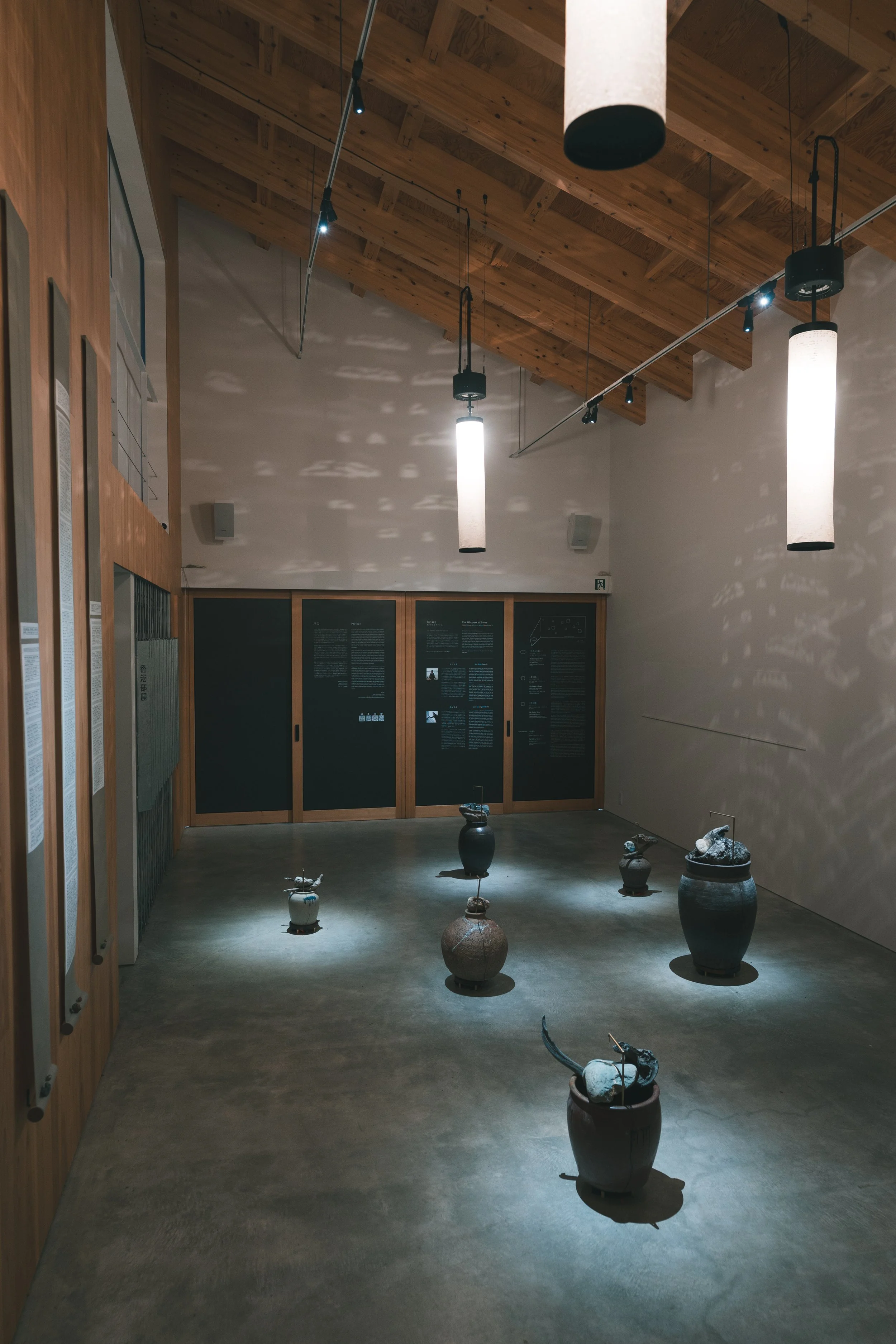
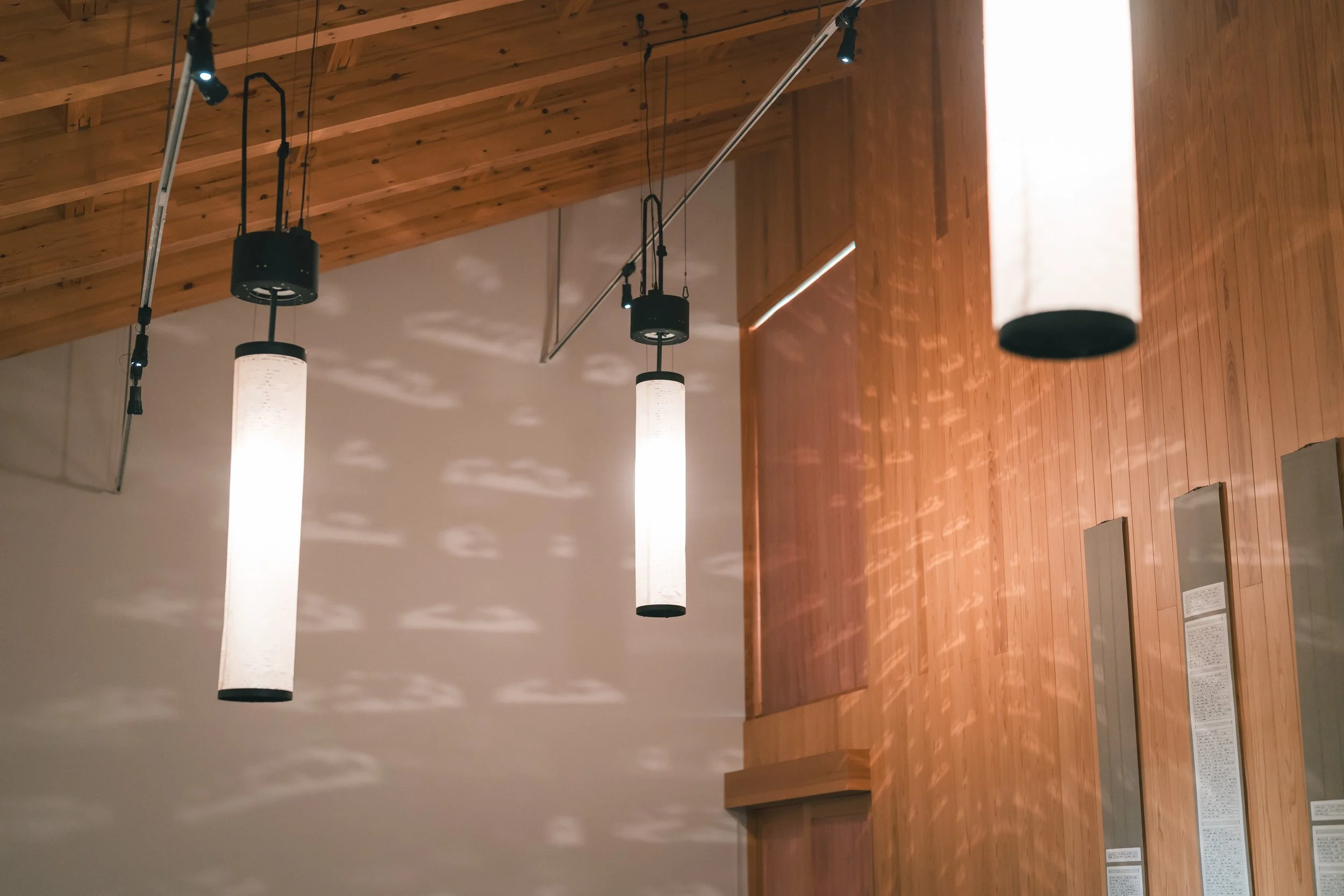
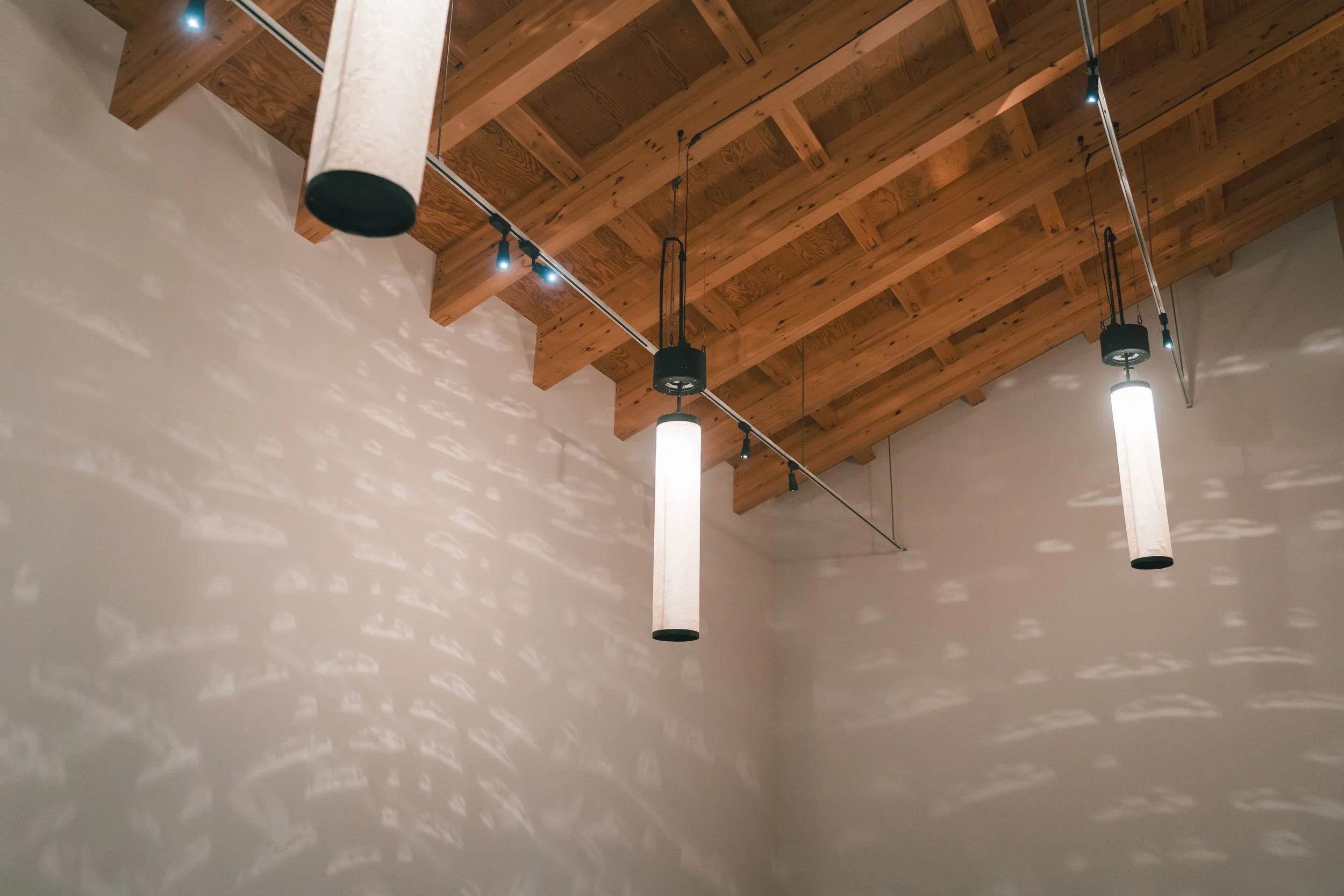
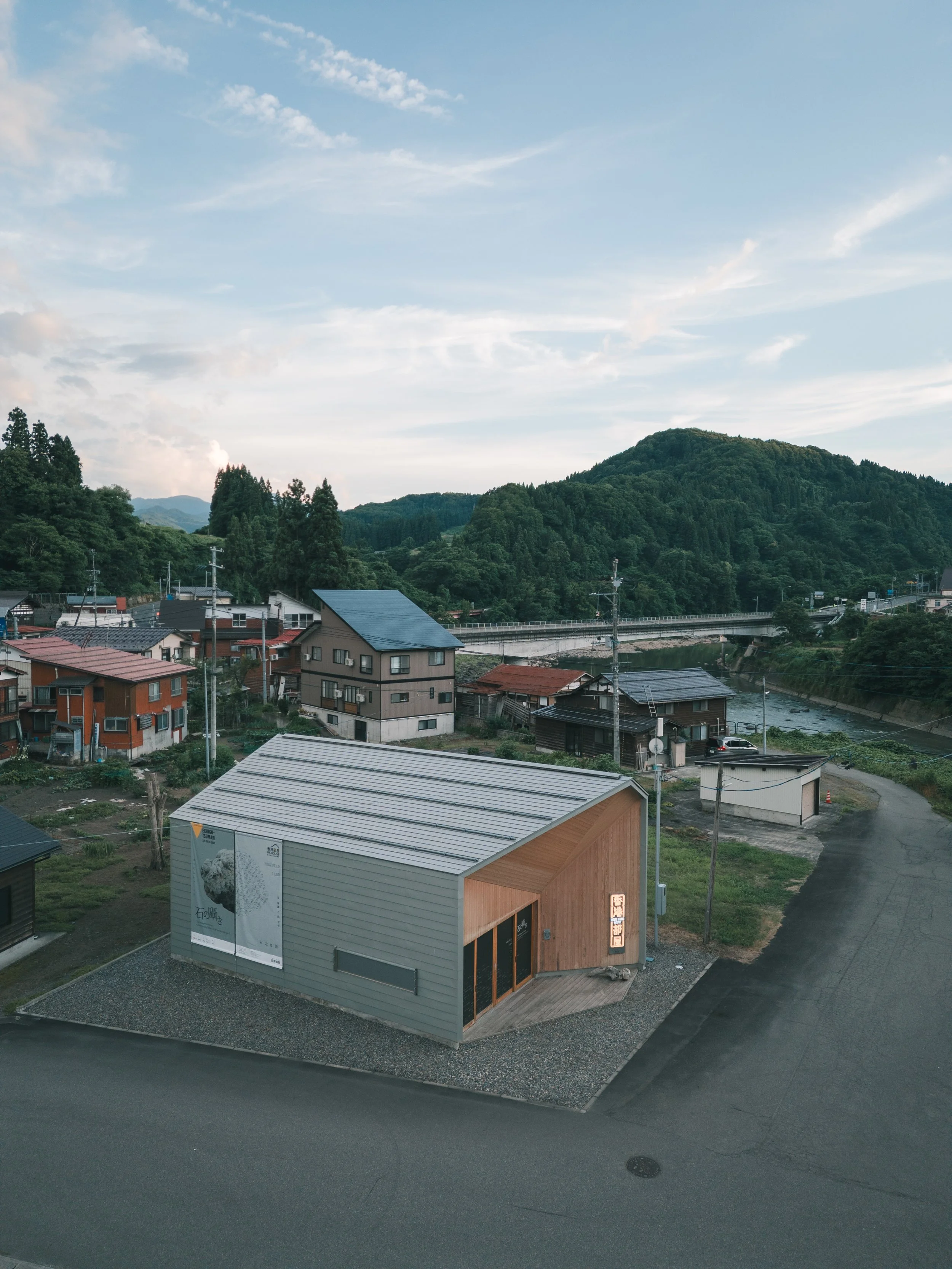
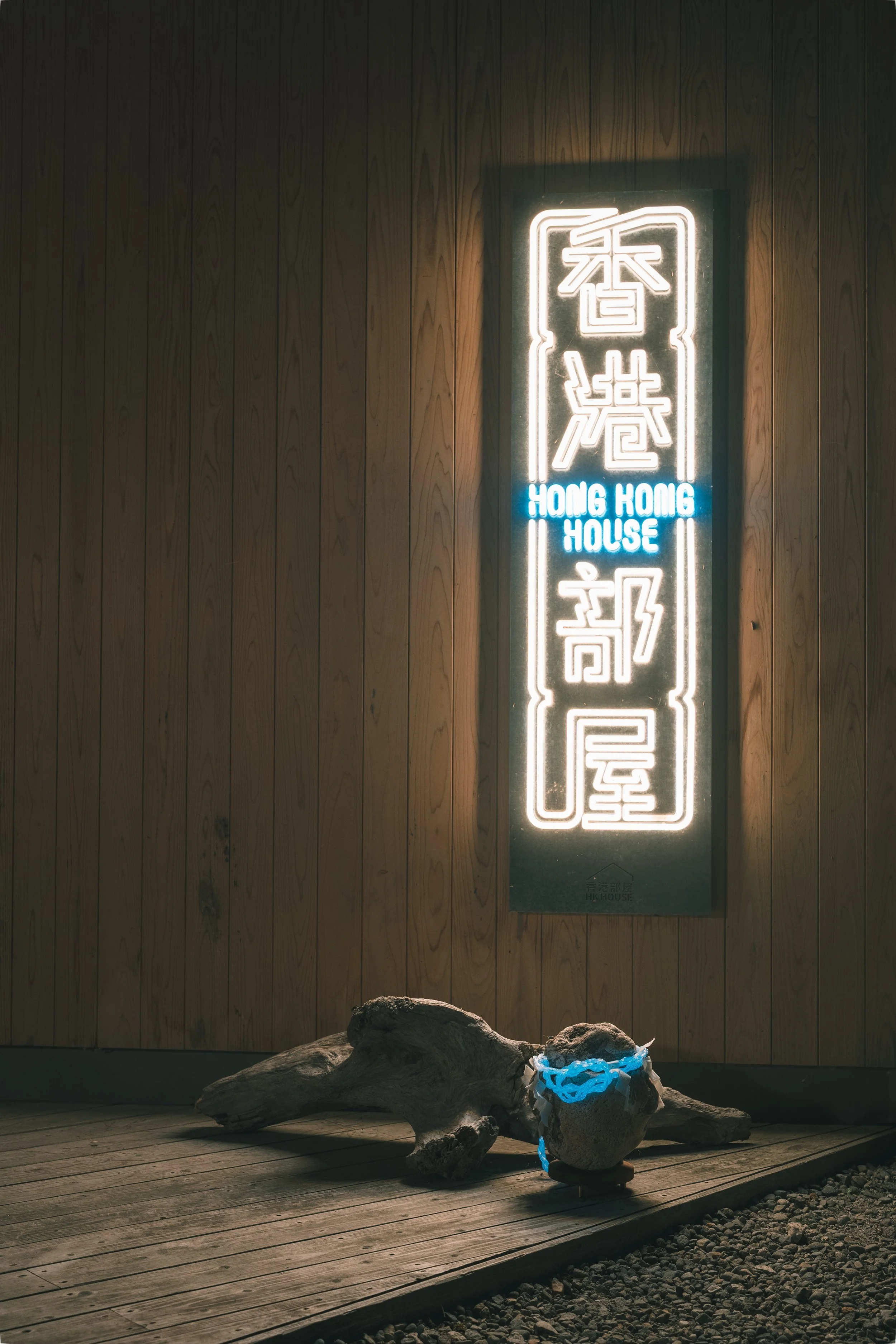
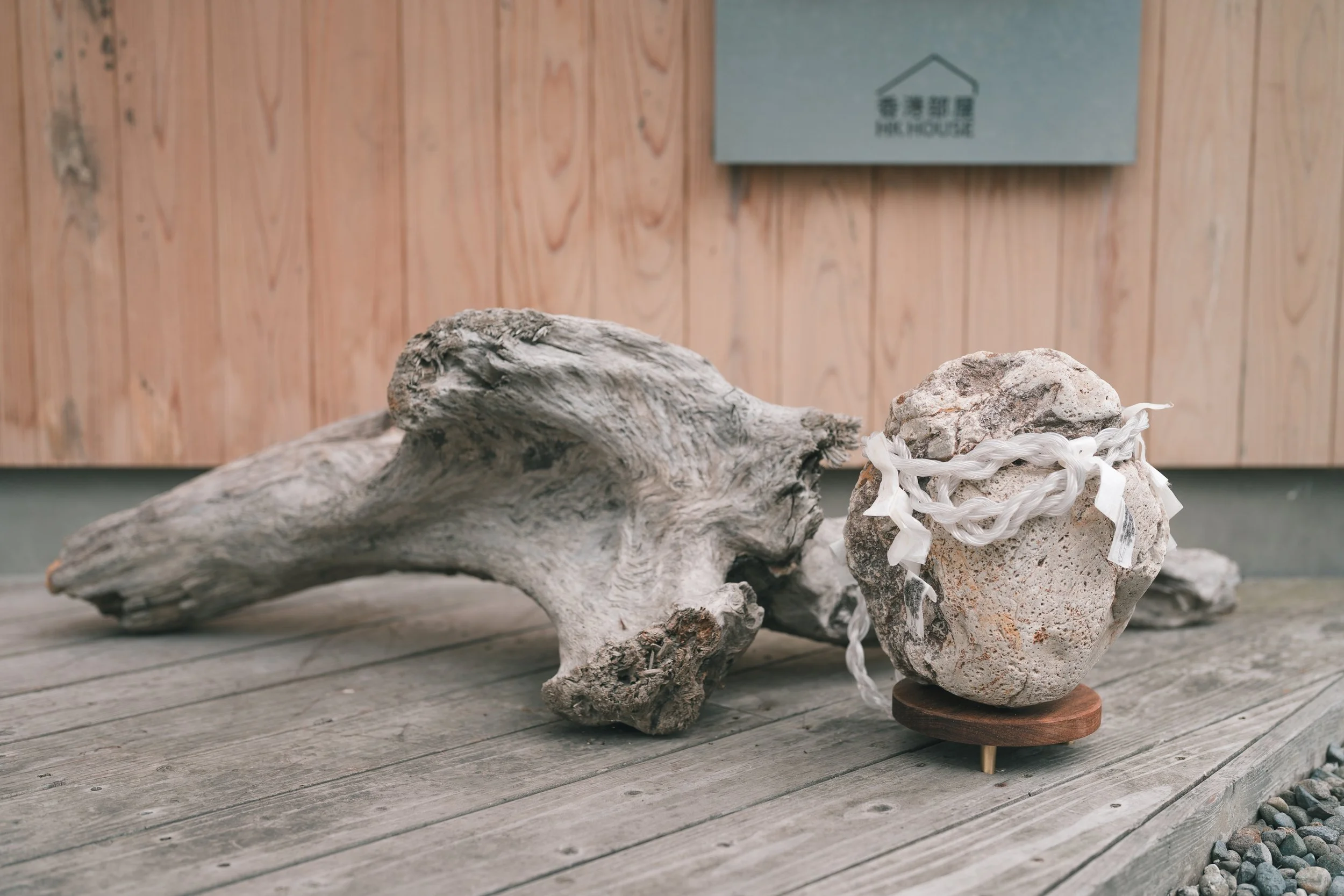

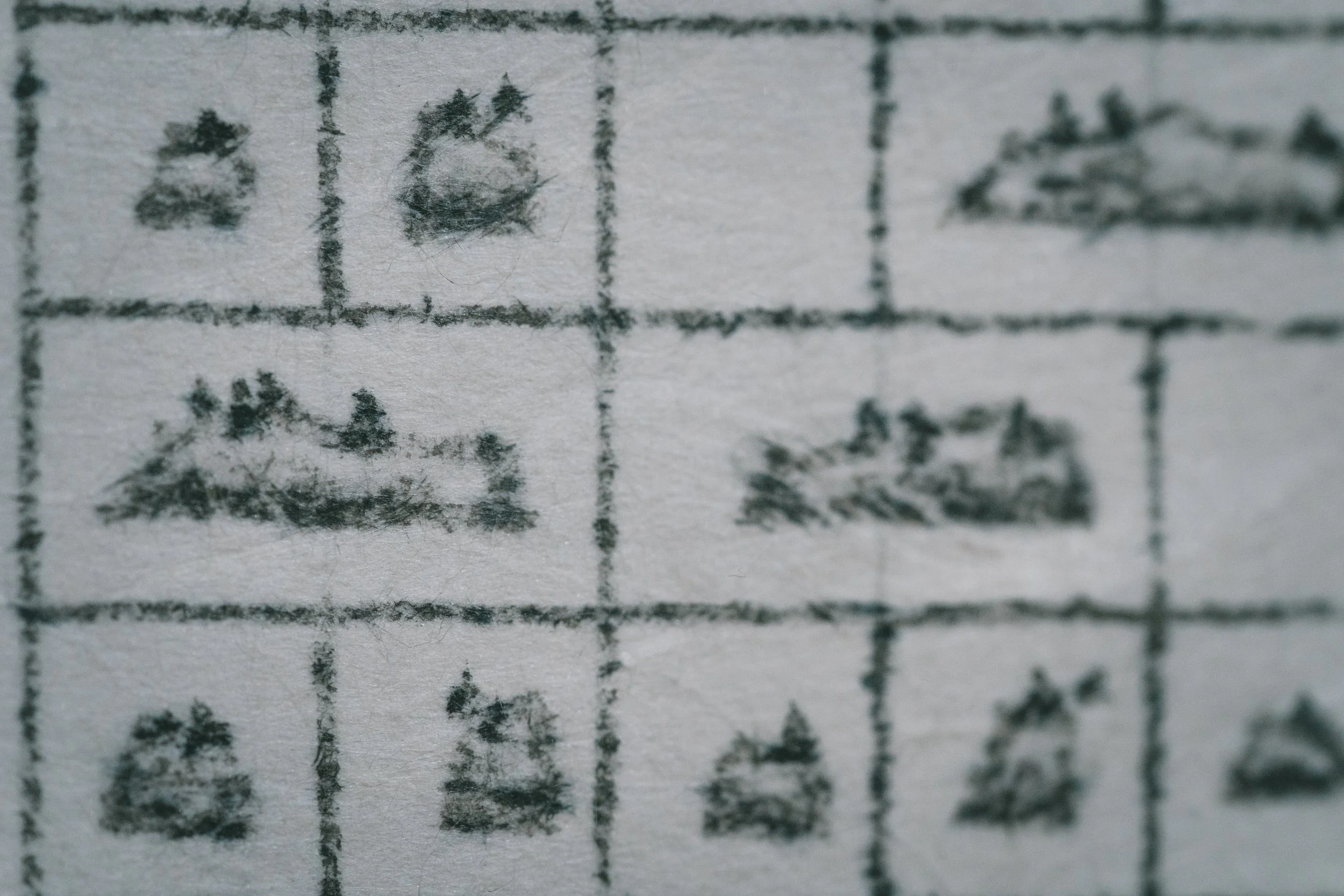
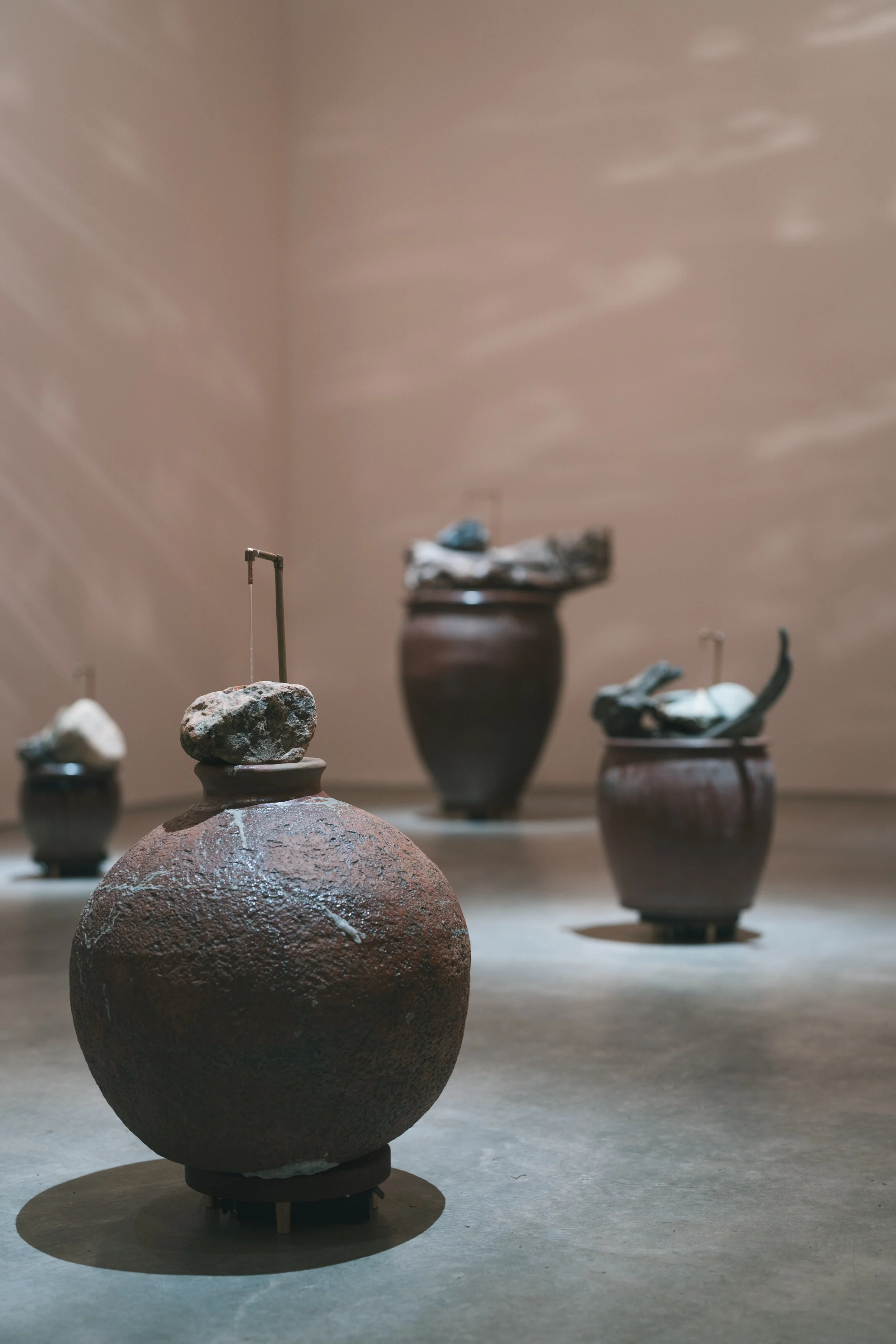
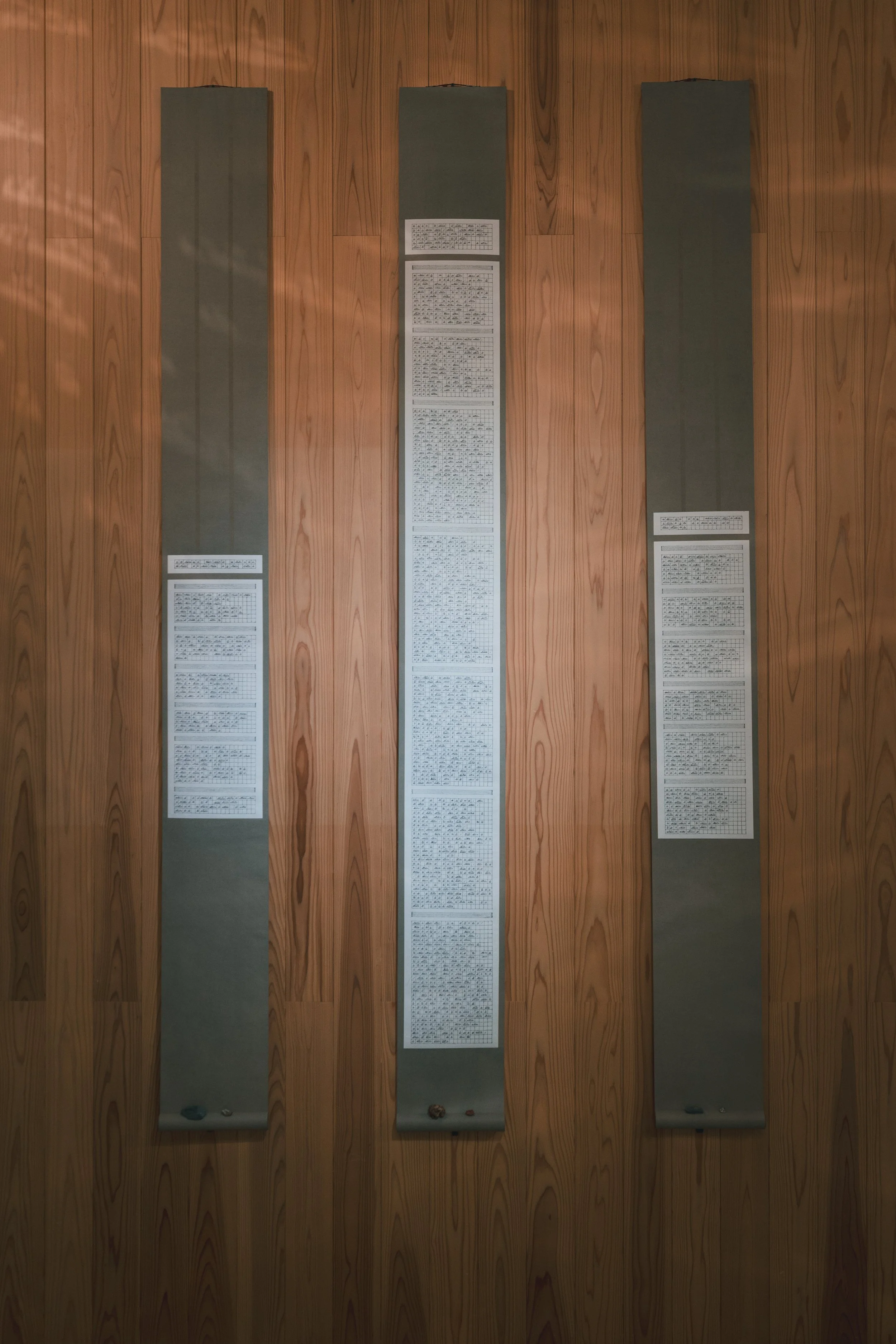
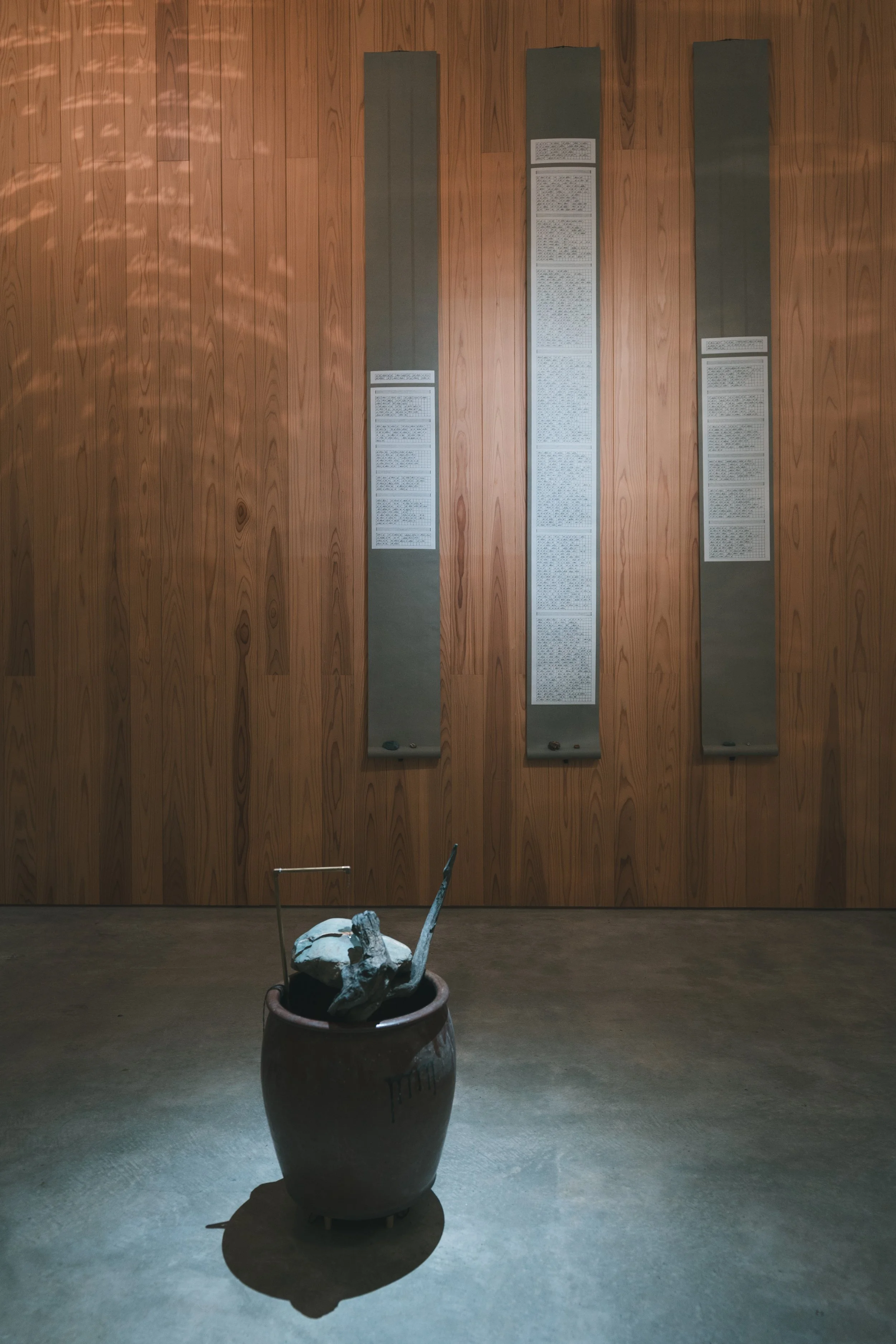
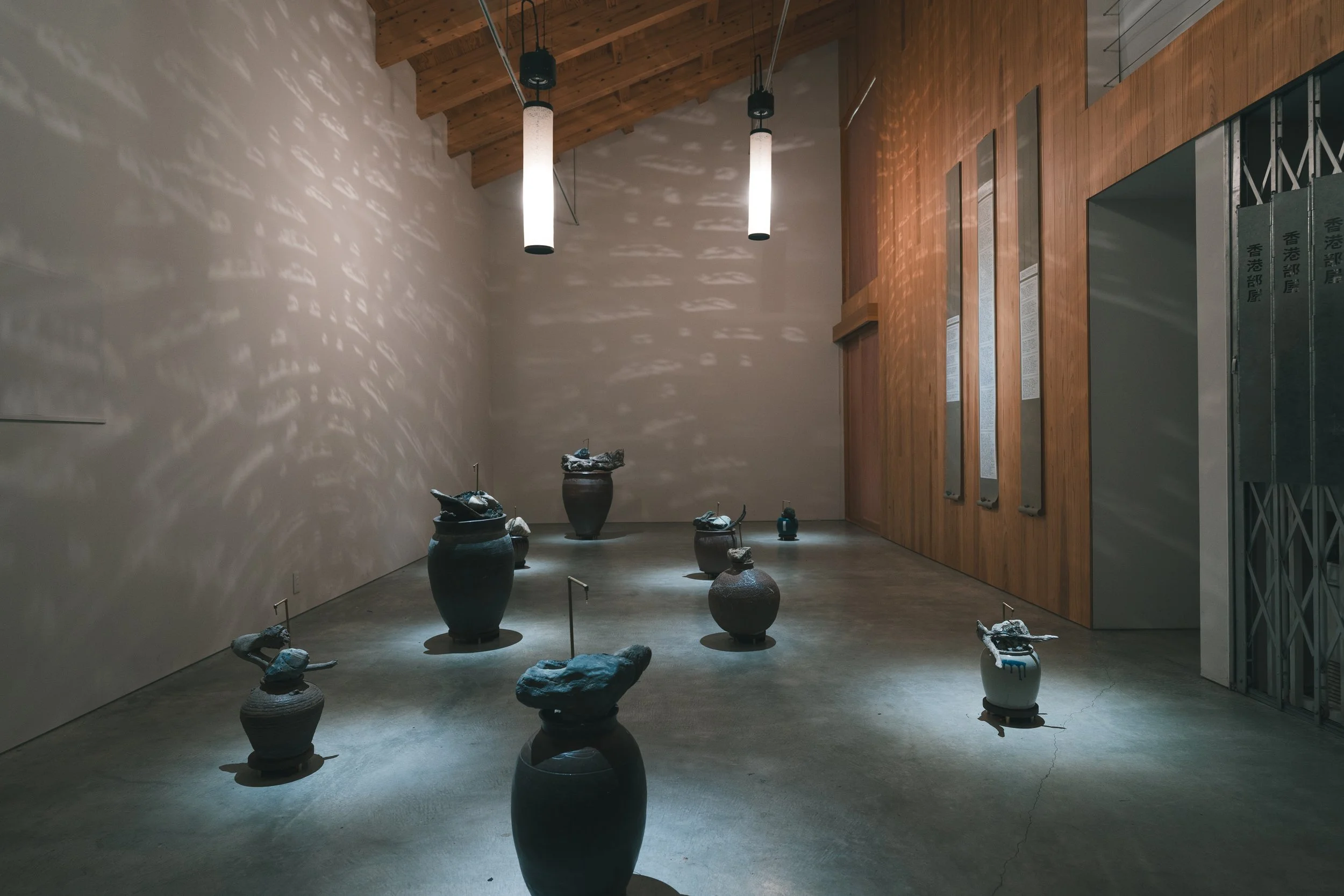
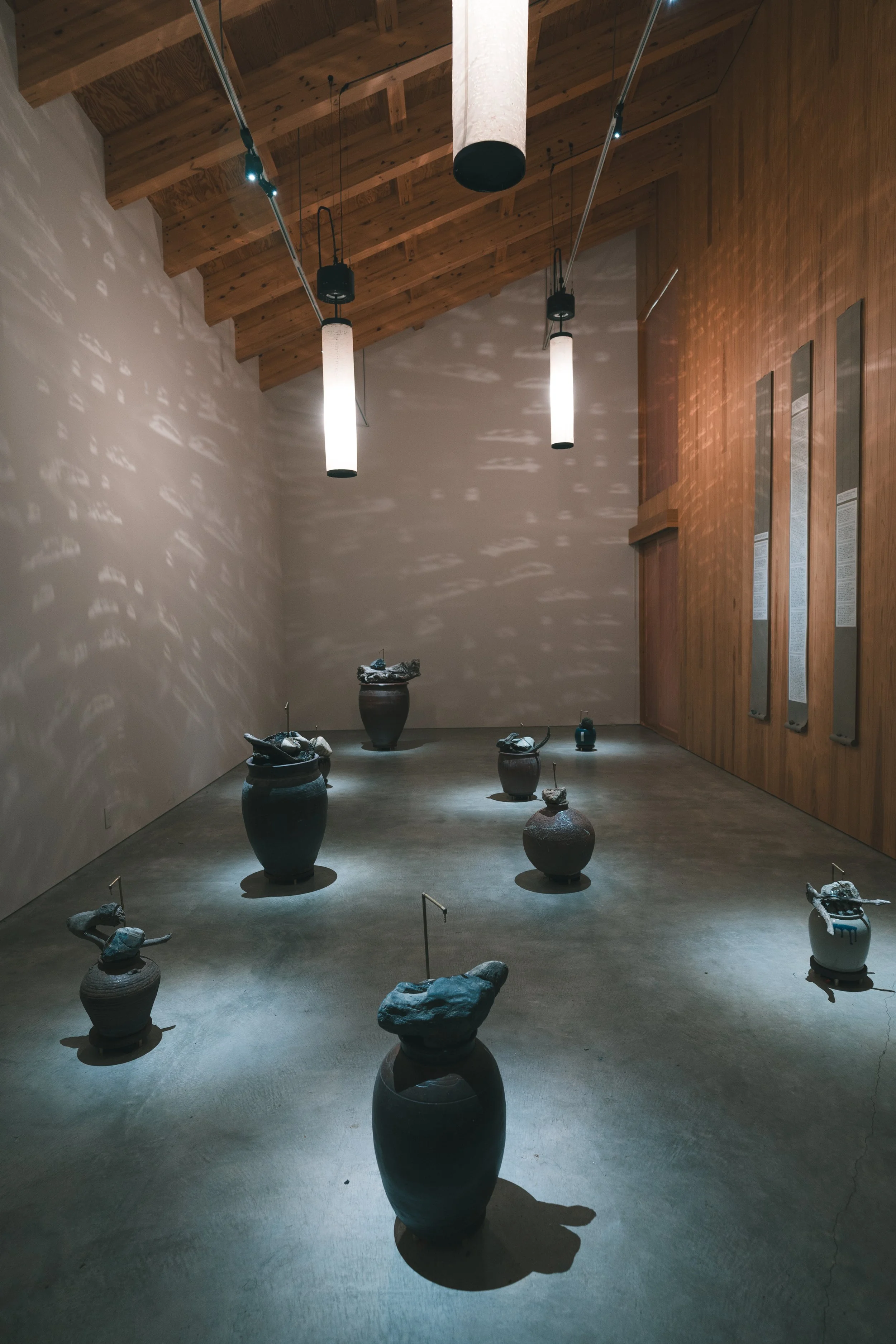
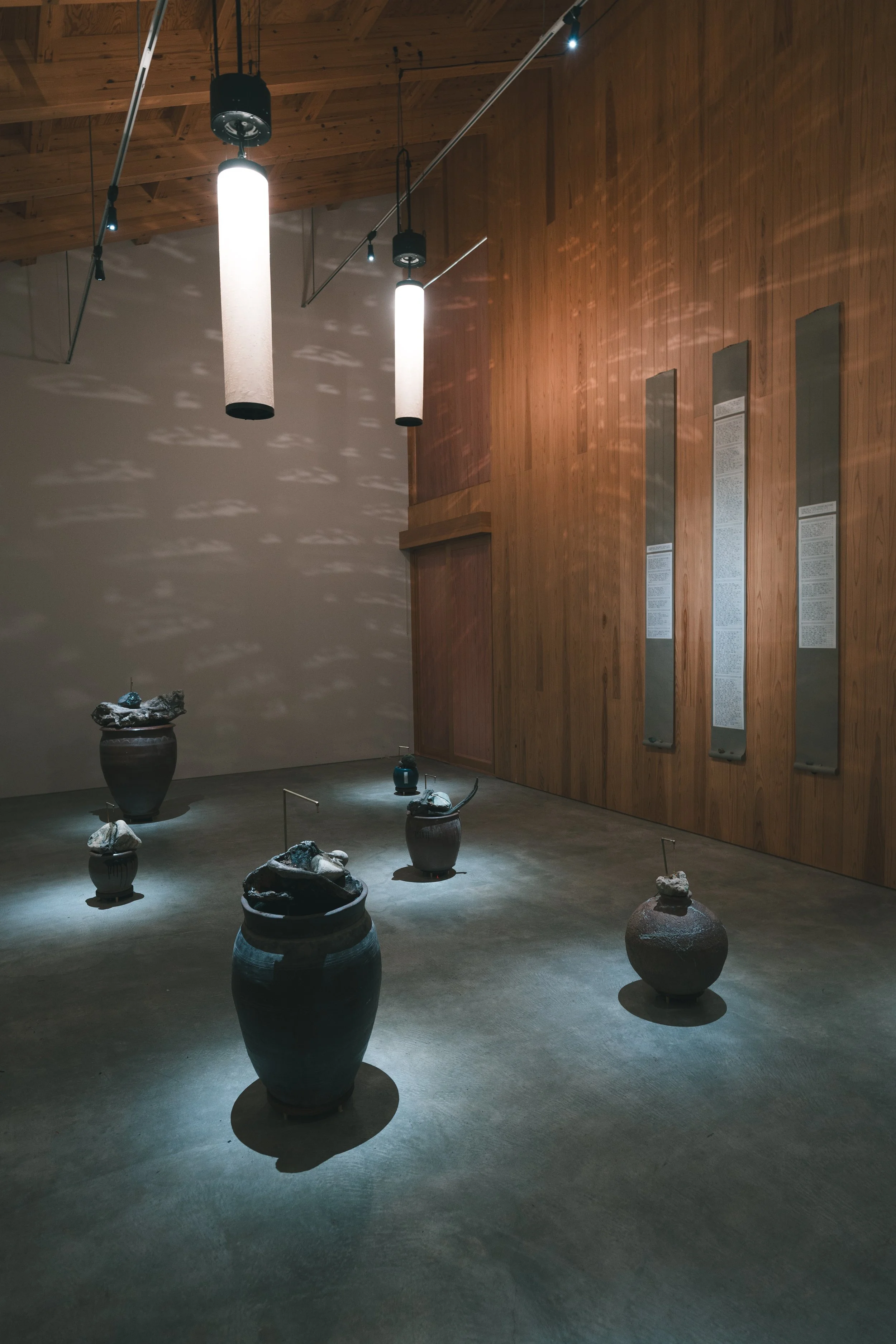
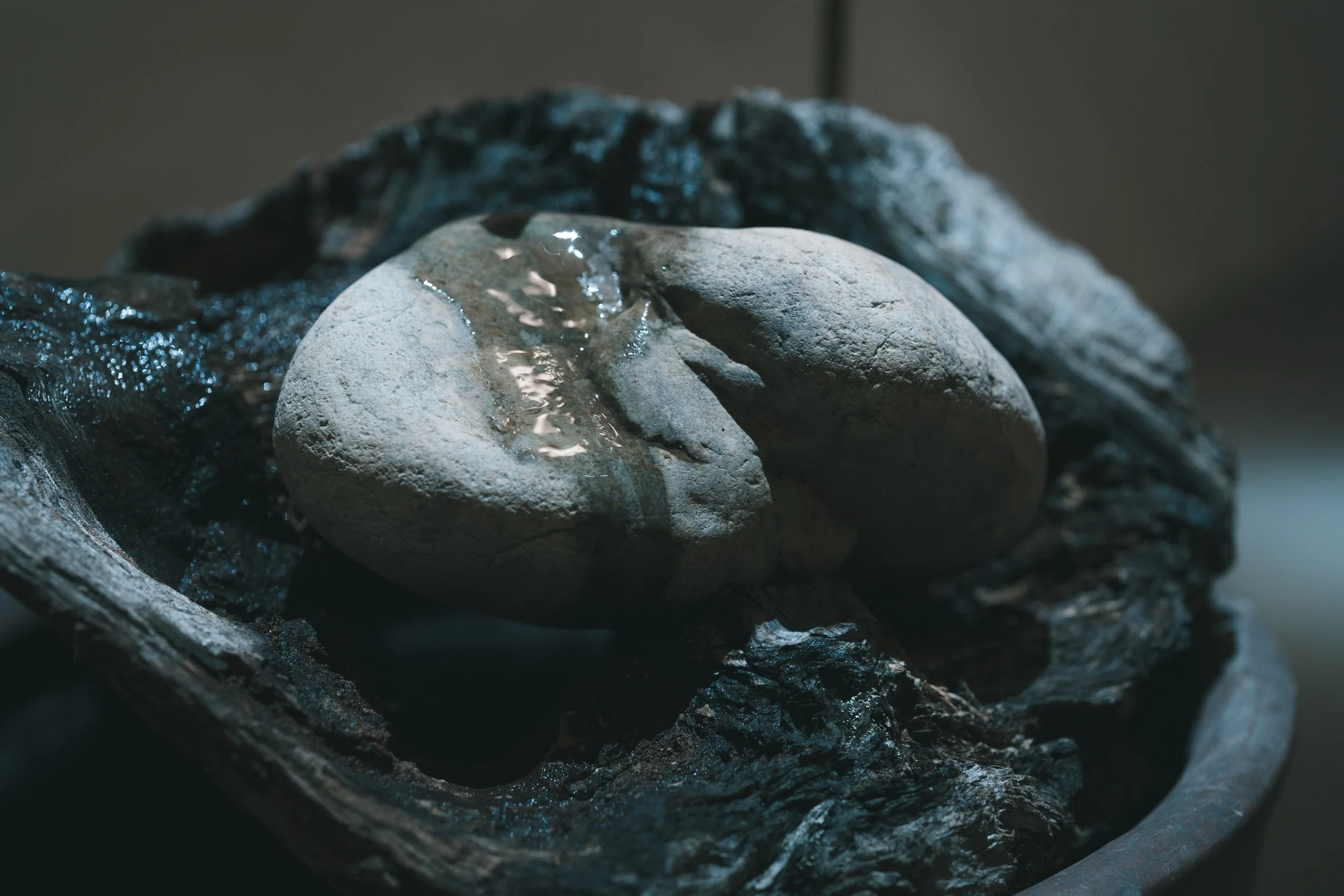
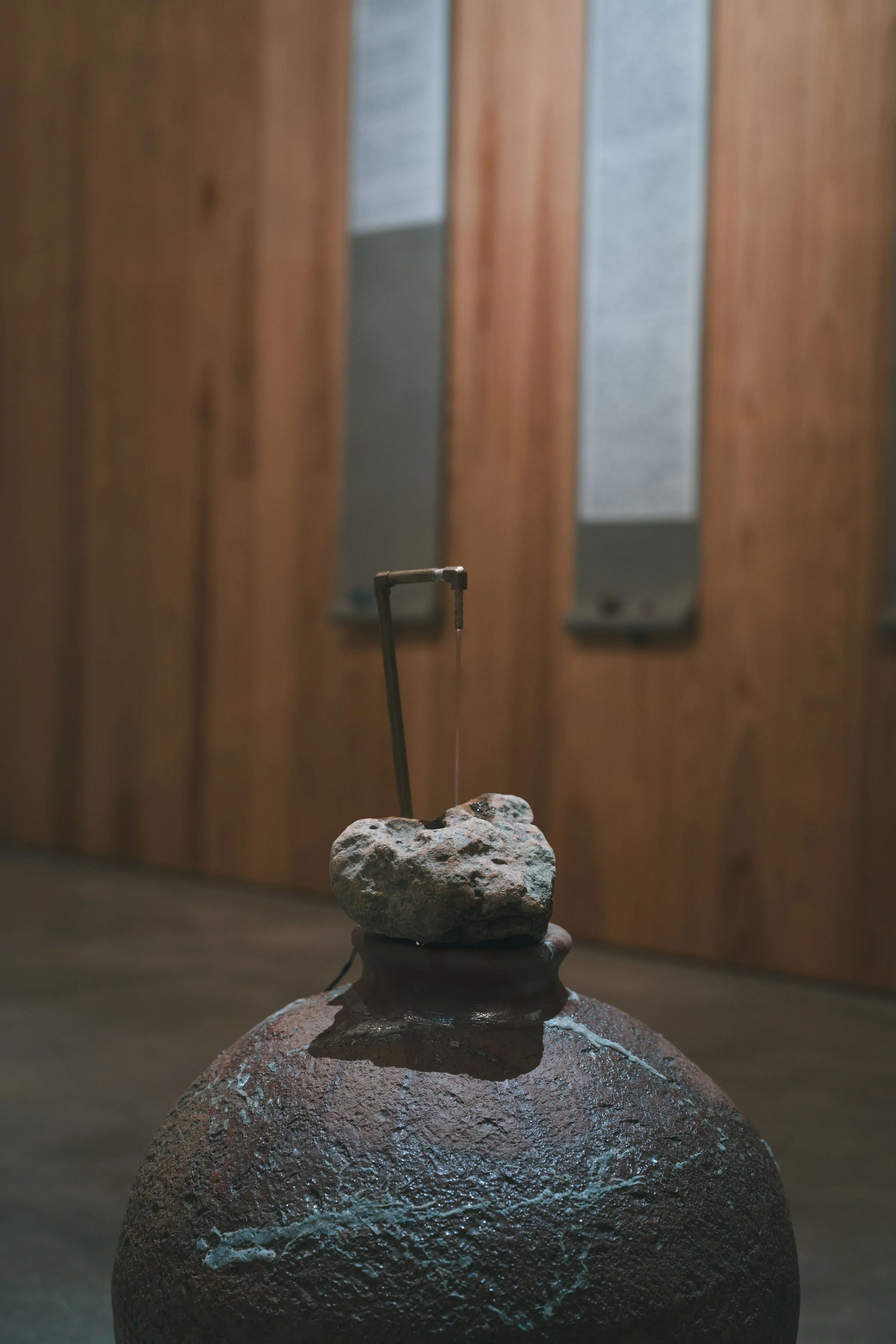
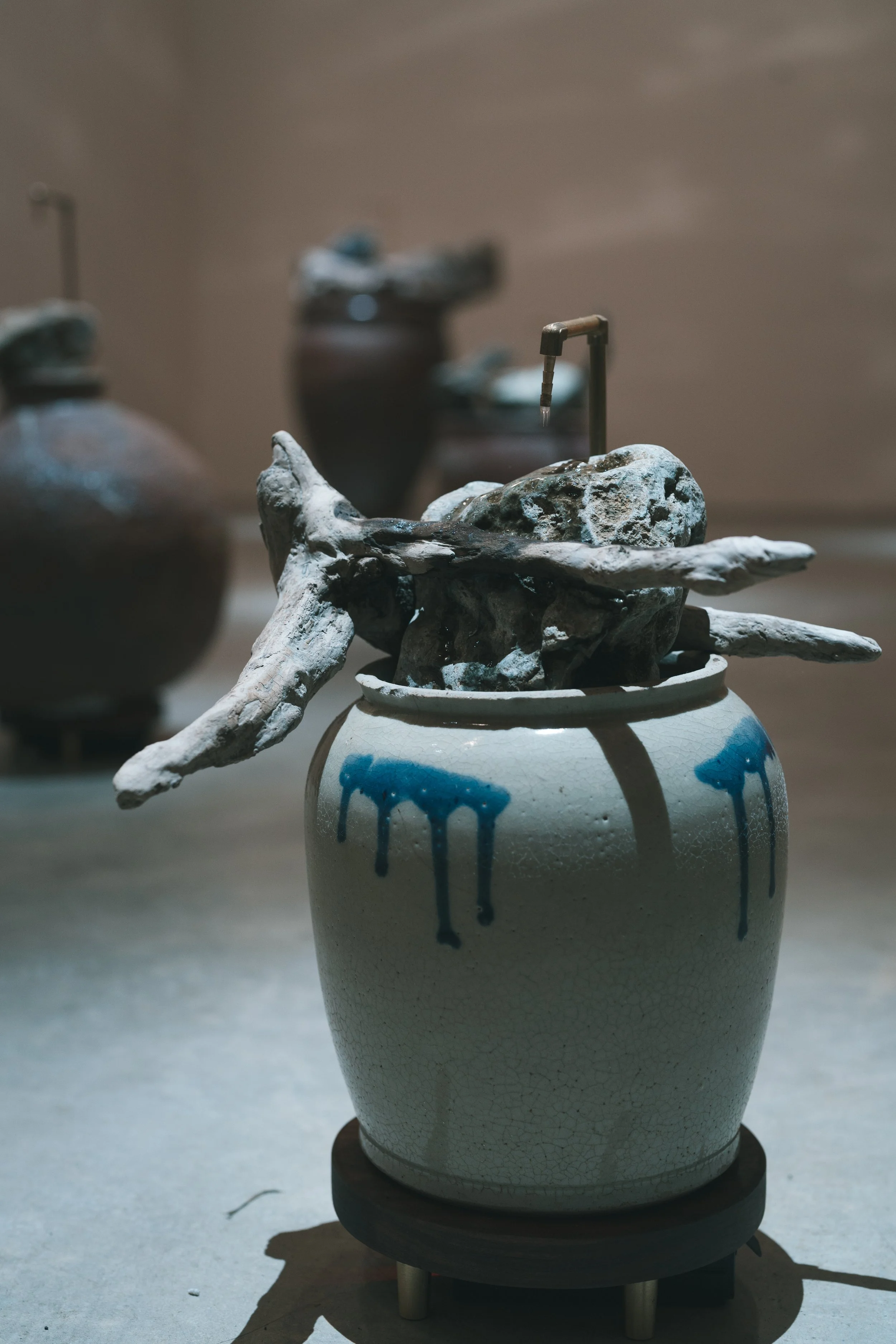
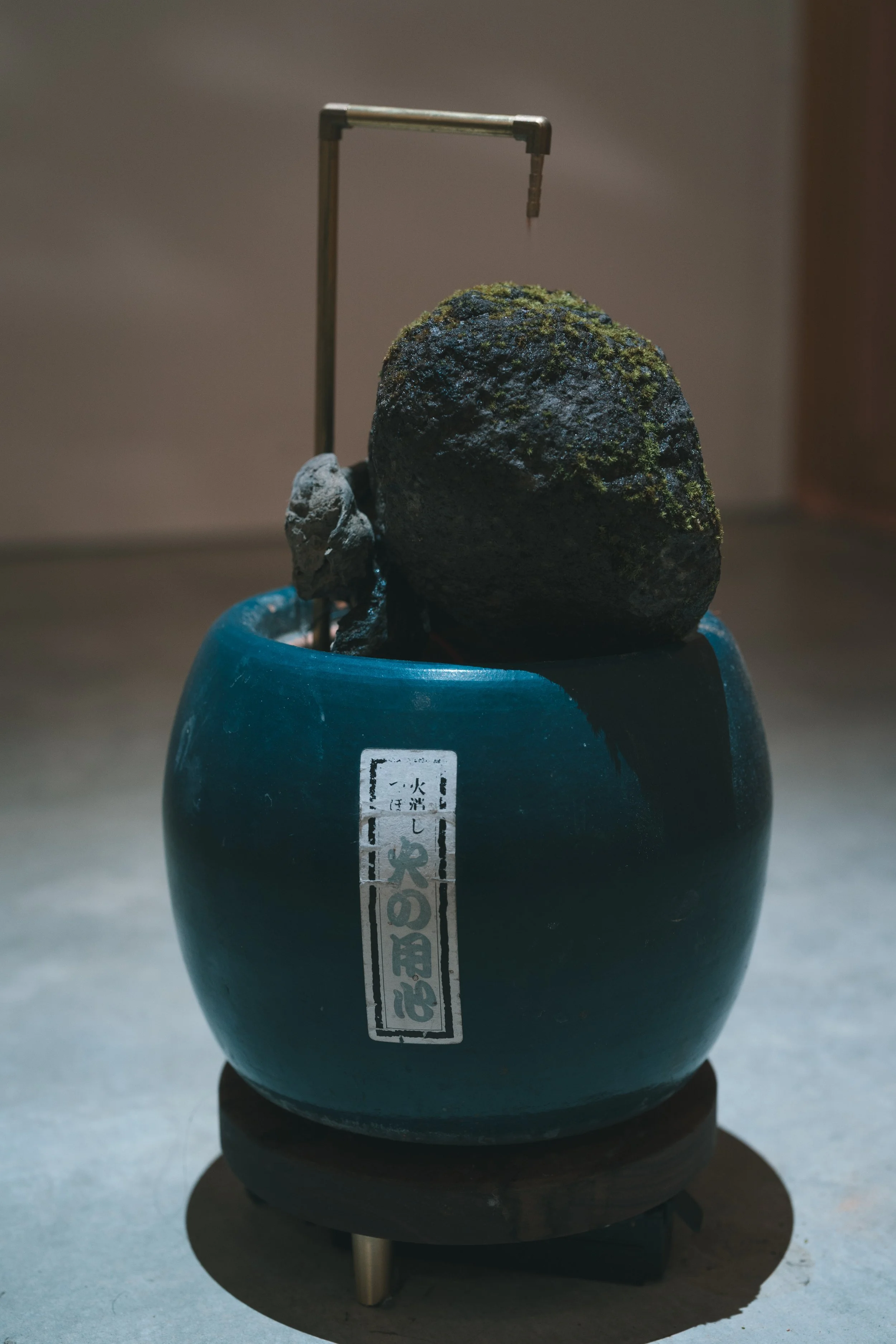

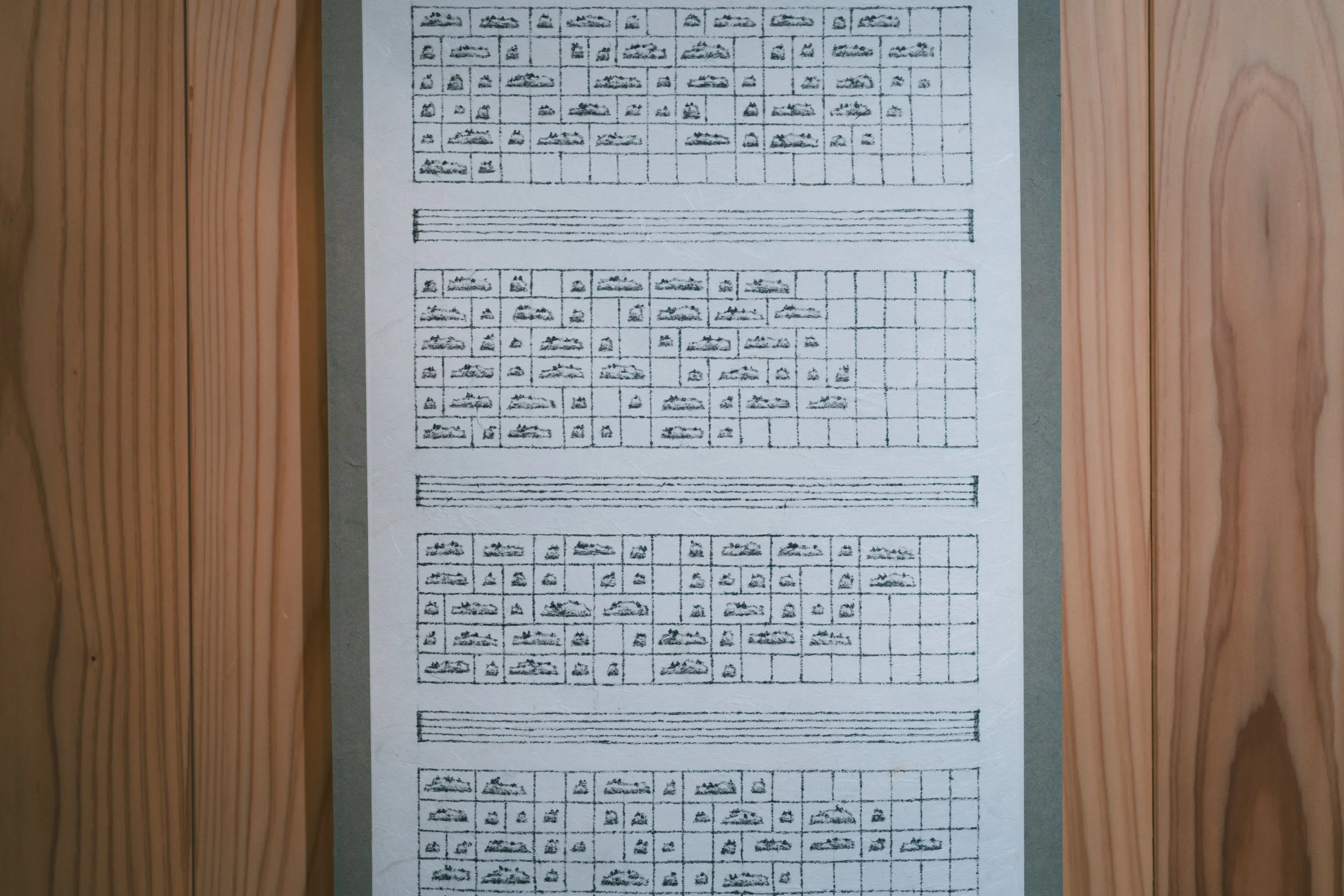
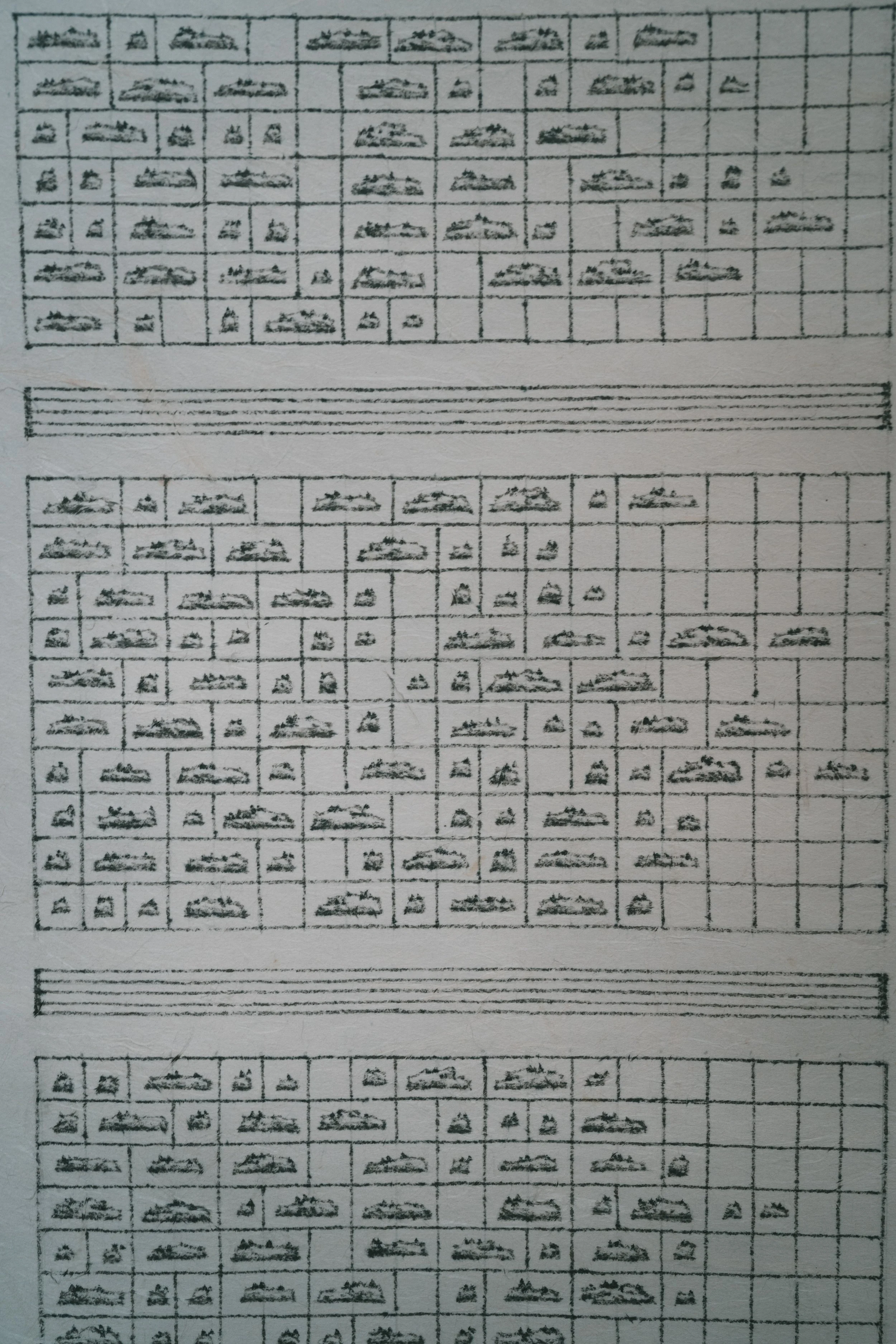

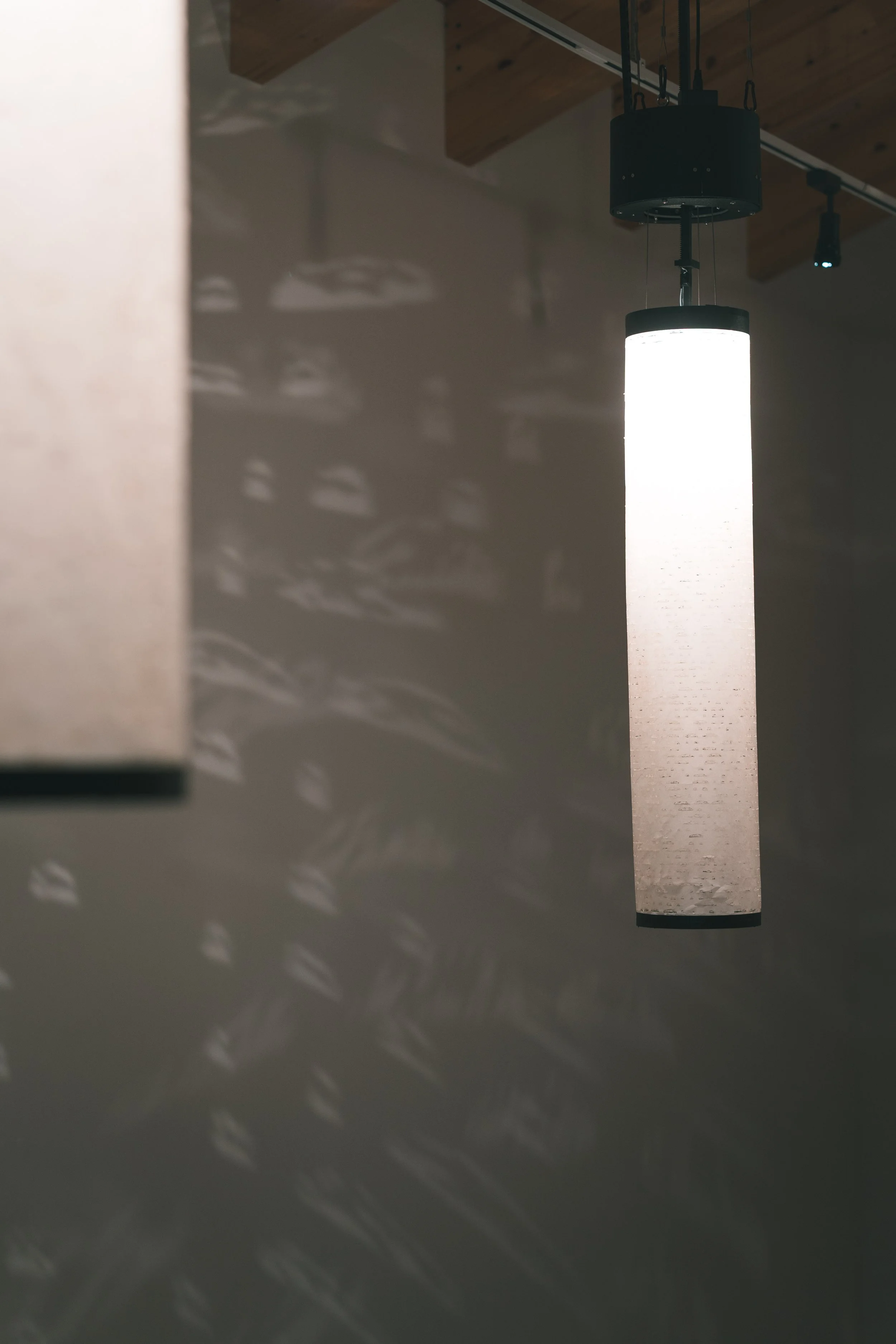
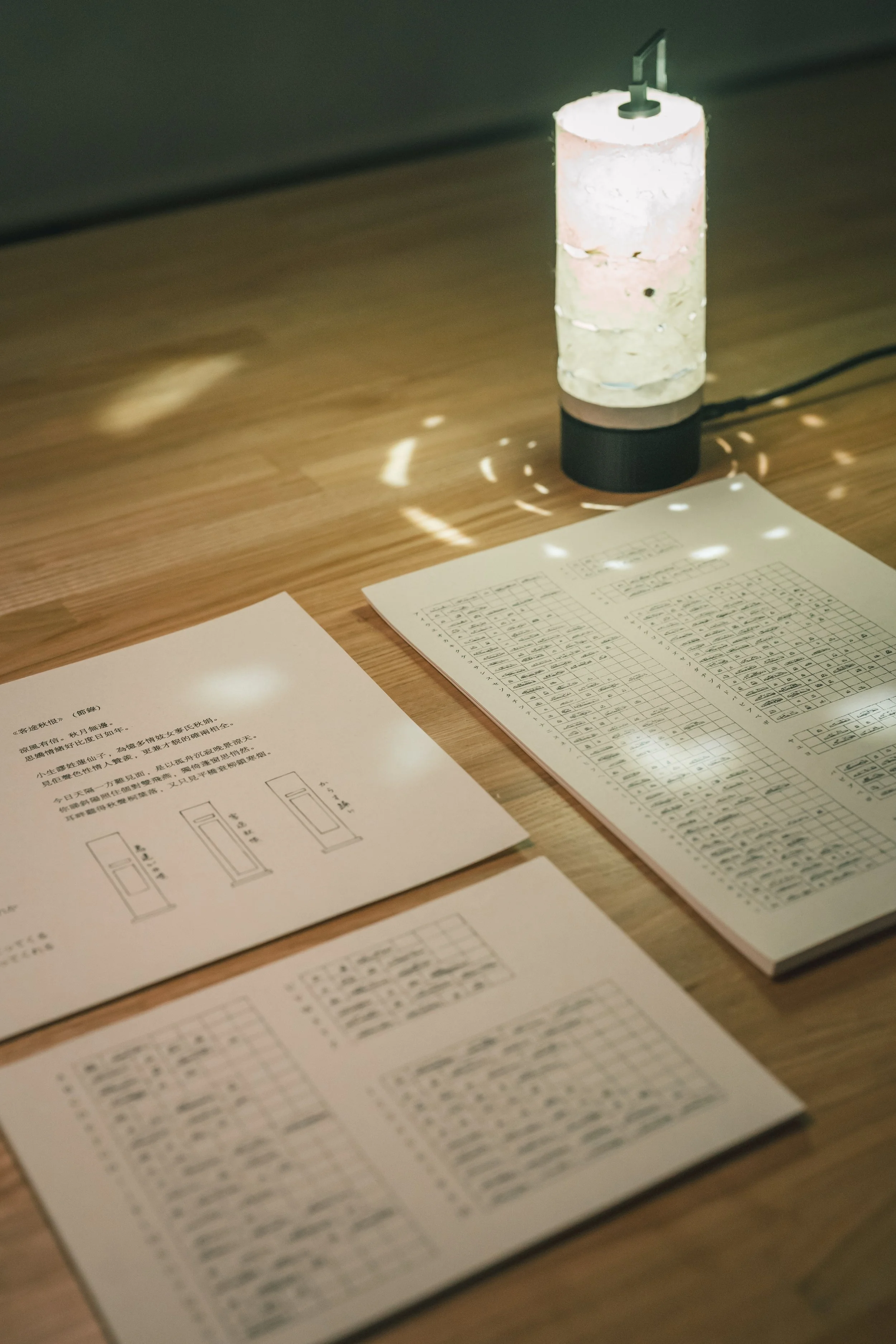
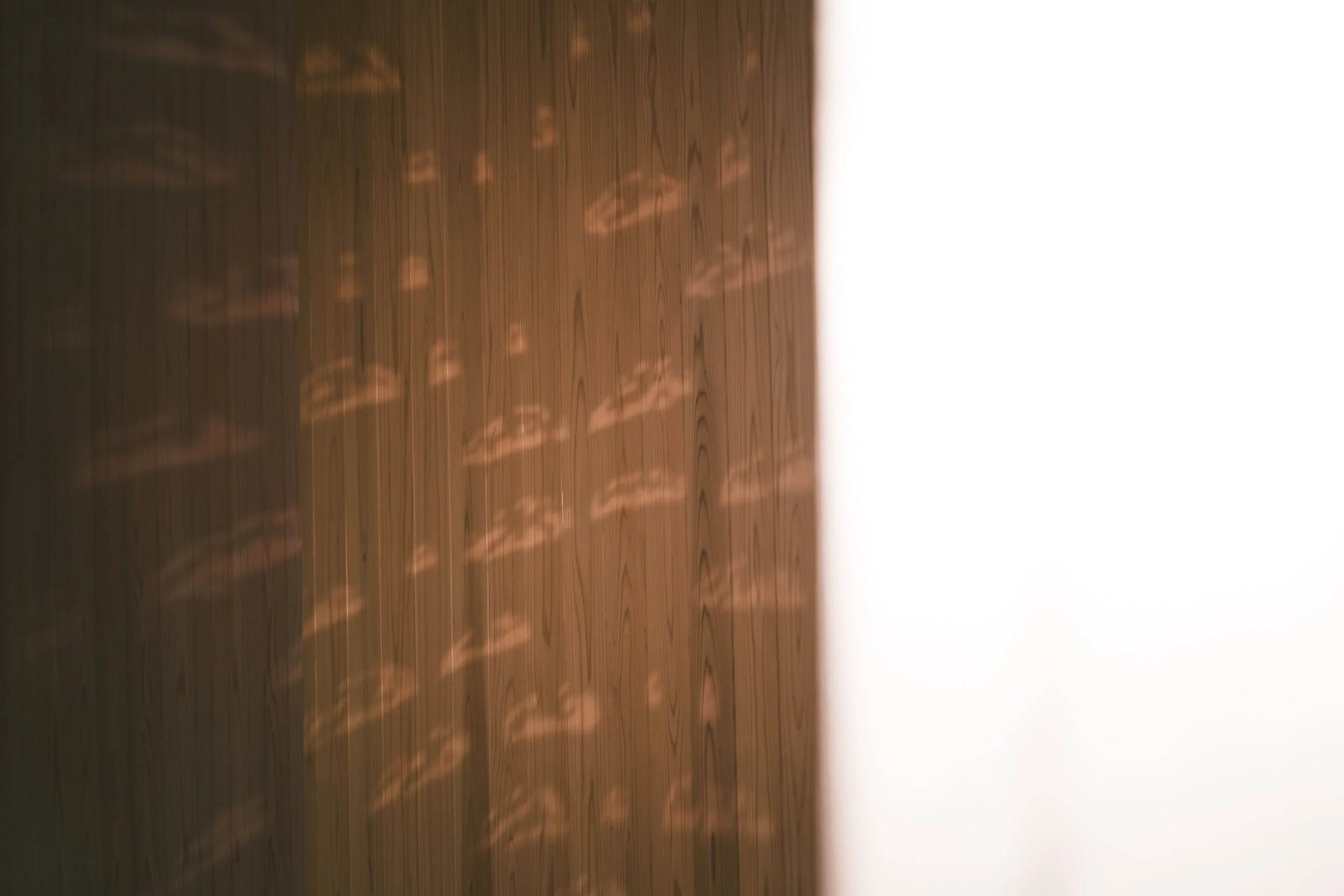
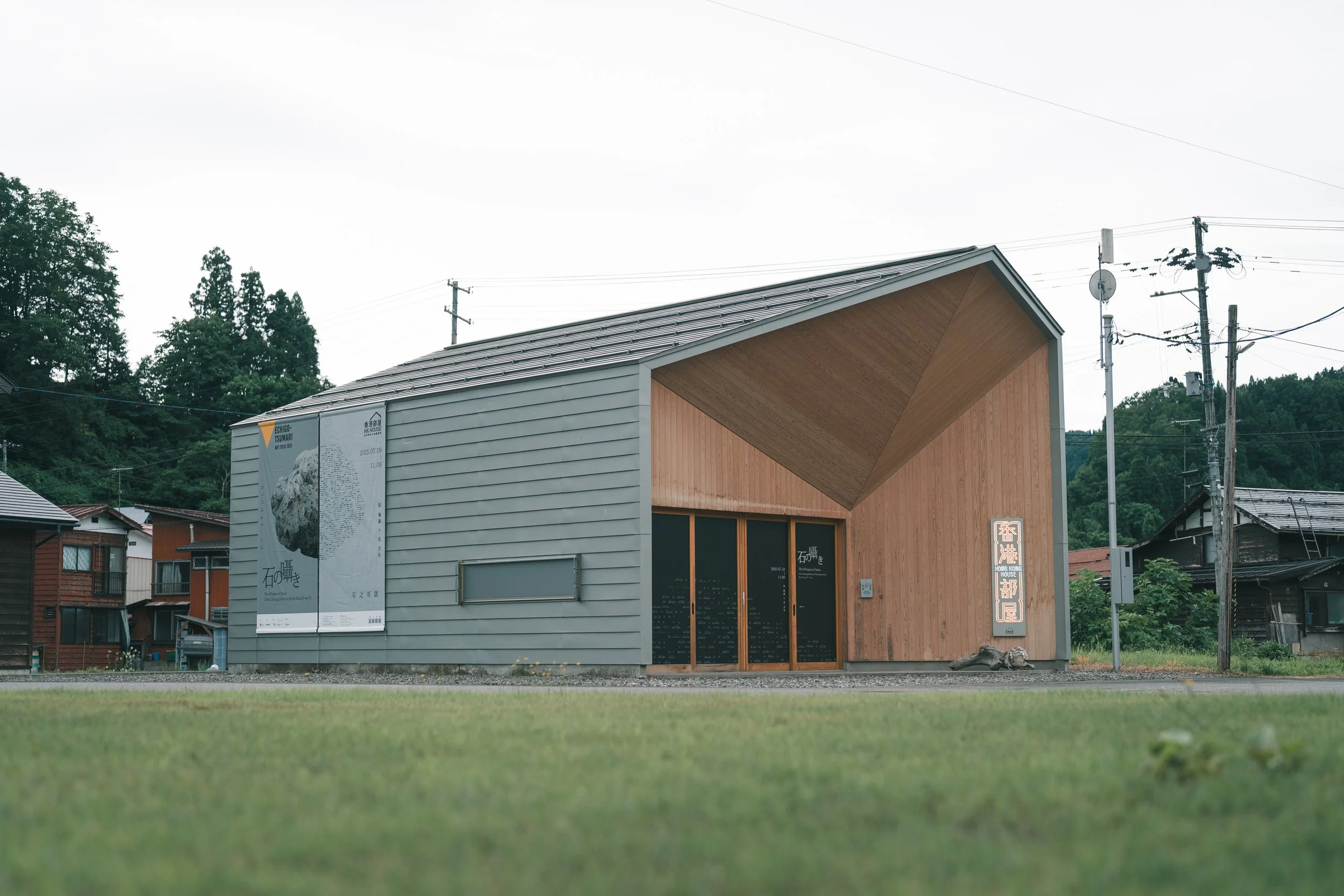
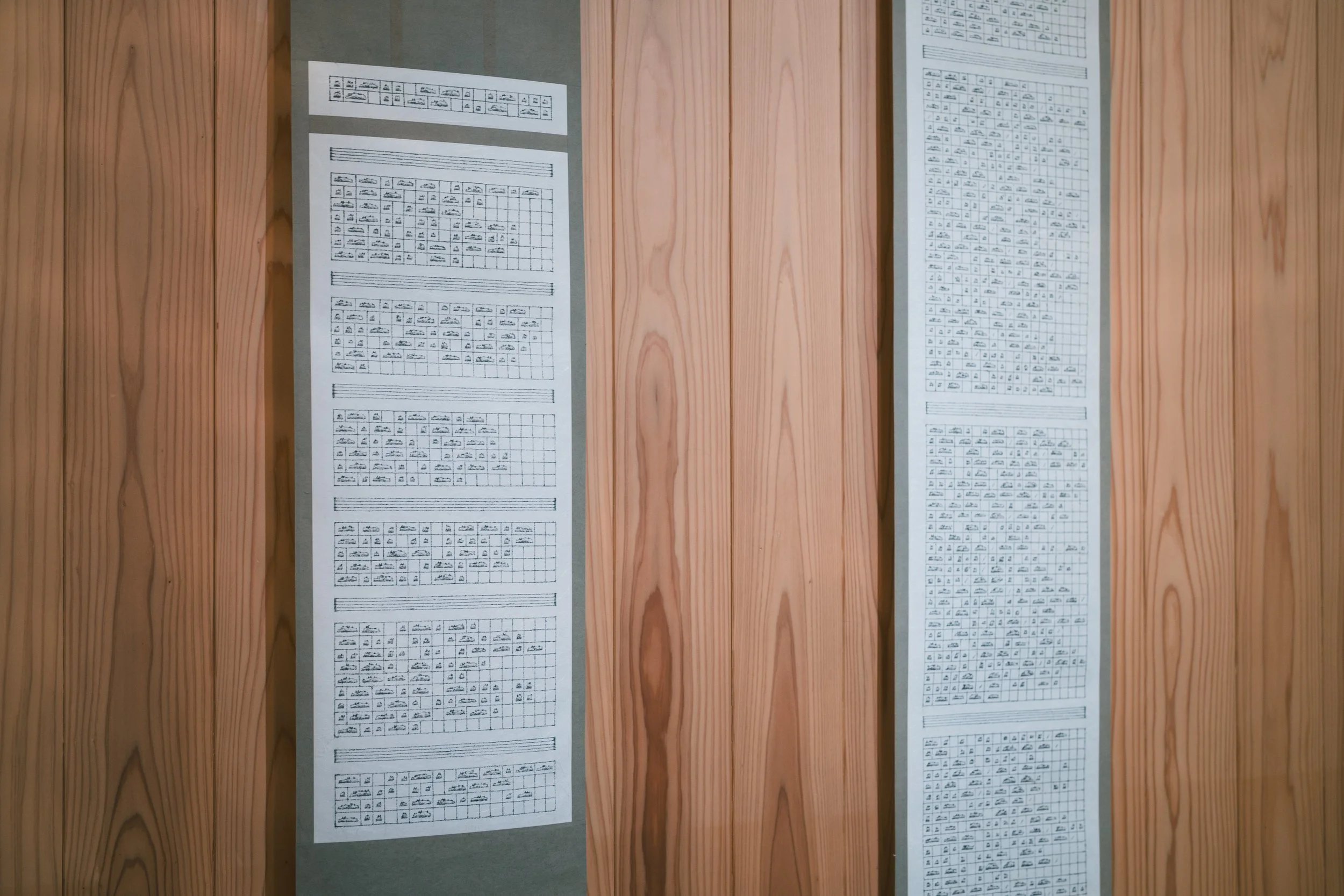
石窟遊樂園 Landscape of Haven
繼2022年「不能承受的輕」之後,有近兩個多月的時間我停止了創作;因為感覺上,我已經把我近年所感受到的憤怒、悲傷、焦慮到無助,都通過山與水喃喃呈現。而我還未能消化當下看似正常但又千瘡百孔的世界,各人都仿彿脆弱得隨時瓦解。我不敢妄動,只能嘗試匿藏並觀察,卻發現腳下的地方已經變得面目全非。未能接受被世界孤立,我先築起洞窟孤立自己,逃離那個嘈雜喧譁的空間,並為自己建構一個專屬的樂園,祈求着一天能重拾好奇、再次對抗內心與世界的崩塌。這就是今次展覽「石窟遊樂園」的意圖。
Following the exhibition of " The Unbearable Lightness" in 2022, I ceased my creative endeavours for a span of over two months. It seemed as if I had imbued the murmurs of mountains and waters with the pent-up emotions of anger, sorrow, anxiety, and desolation that I had experienced in recent years. Yet, I find myself unable to assimilate the seemingly ordinary yet riddled world, where each individual appears fragile, on the brink of disintegration. Cautious in my actions, I retreat and observe, only to discover that the ground beneath me has undergone a profound metamorphosis. Unwilling to accept my isolation from the world, I constructed a sanctuary, a haven of my own making, seeking solace from the clamour and commotion. Within this seclusion, I yearn for the day when I may rekindle my curiosity, bravely confronting the implosion of my inner being and the world at large. Thus, this is the intention behind the exhibition "Landscape of Haven".
展覽介紹 Exhibition Statement
「公元366年,一位名叫樂尊的和尚雲遊至嗚沙東麓的宕泉河谷,希望尋求一片寧靜之地修行。突然,他目睹對面的三危山金光萬道,彷彿千萬佛在金光中顯現。於是他在山上開鑿了莫高窟的第一個洞窟,從此洞窟成了他修行的場所,崖上的靜室轉化佛陀的天宮。」故事傳開後,商旅、信使紛紛差使在敦煌修造石窟,作為住宿、生活、補給和禪修的場所,並進行各種宗教崇拜以祈求旅途平安。
是次展覽啟發於「樂尊開鑿莫高窟」的故事,通過「建構」一個又一個洞穴的景觀,以當代山水畫回應世界的荒誕與內心的掙扎。展覽分為兩個部分,第一部分以第一人稱的視覺展示了洞內外的風景,通過解構日常的視覺和傳統山水的模式與圖象,重新建構一個擠擁且孤獨的異空間,借以表達對外部世界的抗拒,並尋求著心靈上的安慰;第二部分則進一步解拆景觀,以建築模型配件的方式呈現,揭示創作背後的虛構性和堆砌性,邀請觀眾共同想像並「建構」屬於自己的洞穴。
In the year 366 AD, a monk named Lezun embarked on a journey to the Angquanzi Valley at the eastern foot of Mount Wusha, in search of a serene place for spiritual practice. To his amazement, he witnessed a spectacle of golden light emanating from the Three Dangerous Mountains across the river, as if countless Buddhas were revealed within the radiance. Inspired by this divine sight, he carved the first cave of the Mogao Grottoes on the mountainside, establishing it as his place of cultivation, with the tranquil chambers on the cliff transforming into celestial abodes of the Buddha. The tale spread, and thereafter, merchants and messengers flocked to Dunhuang to construct grottoes, serving as sanctuaries for lodging, sustenance, and contemplation while engaging in various forms of religious worship to invoke safe travels.
This exhibition draws inspiration from the story of Lezun Carving the First Cave of the Mogao Grottoes and aims to 'construct' a landscape of interconnected caves. Through a contemporary interpretation of traditional landscape painting, it responds to the absurdity of the world and the inner struggles. The exhibition consists of two parts. The first part visually presents the landscapes inside and outside the caves from a first-person perspective. By deconstructing the conventional visual and traditional landscape patterns, it reconstructs a crowded yet solitary alternate space. This expresses resistance towards the external world while seeking solace for the spirit. The second part further deconstructs the landscapes, presenting them through architectural model accessories. It reveals the fictional and assembled nature behind the creative process, inviting the audience to collectively imagine and "construct" their own caves.
Designed by for&st













































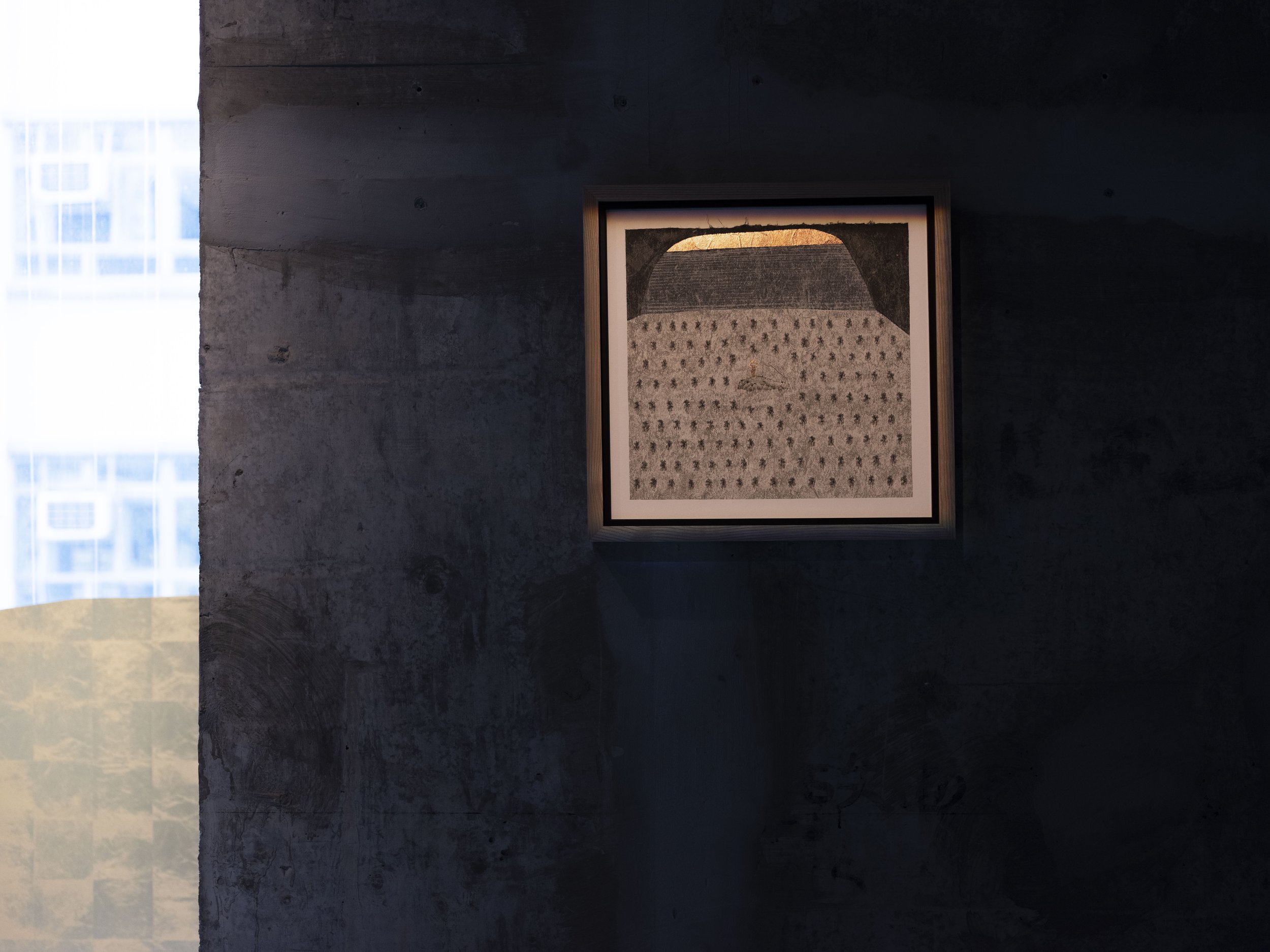











不能承受的輕 The Unbearable Lightness
展覽介紹 Exhibition Statement
我們從歷史中無數次目睹了生命在各種重壓下的扭曲與變形,壓抑的生活和沉重的負擔把我們壓得近乎崩塌;但覺察到世界之蒼茫以及自身的渺小,意識到所有對抗盡終都是徒勞,我們好像只能放棄一切的期待與付出,被動、無奈地接受著一切告知與安排,生命猶如在半空中漂浮,將失去自我定位與尋找自身義意的能力。在這悖繆複雜的時代,我無法釐清這種既輕又重的生存狀態,壓迫的生活讓我感到無比沉重; 但無法重演的過去和無法預定的未來亦同時讓我感到輕不著地,比空氣還輕。
是次展覽以「不能承受的輕」為題,以當代山水畫回應生命中各種輕與重的模糊關係,藉著作品記錄當下浮沉間的各種經歷,以對抗內心輕不著地的無力感。
Time and time again, we witness life’s distortion and deformation under immense pressure. Distress and burden have crushed us to the point of collapse. The mightiness of authority and our insignificance contrast sharply. We have no choice but to conform. Any confrontation is futile. Life appears to suspend in midair as we can hardly find our places and meanings in today’s world. I am also unassured and incapable of changing the status quo. Such a bleak future leaves me floating weightlessly in uncertainty; at the same time the weightiness of oppression drags me back to the ground with suffocating pressure.
The title of the present exhibition, "The Unbearable Lightness", captures my complex emotions of weightlessness and heaviness towards today’s society. They chronicle my experiences, dilemma and inner struggle in bearing this invisible weight of lightness.
Designed by for&st



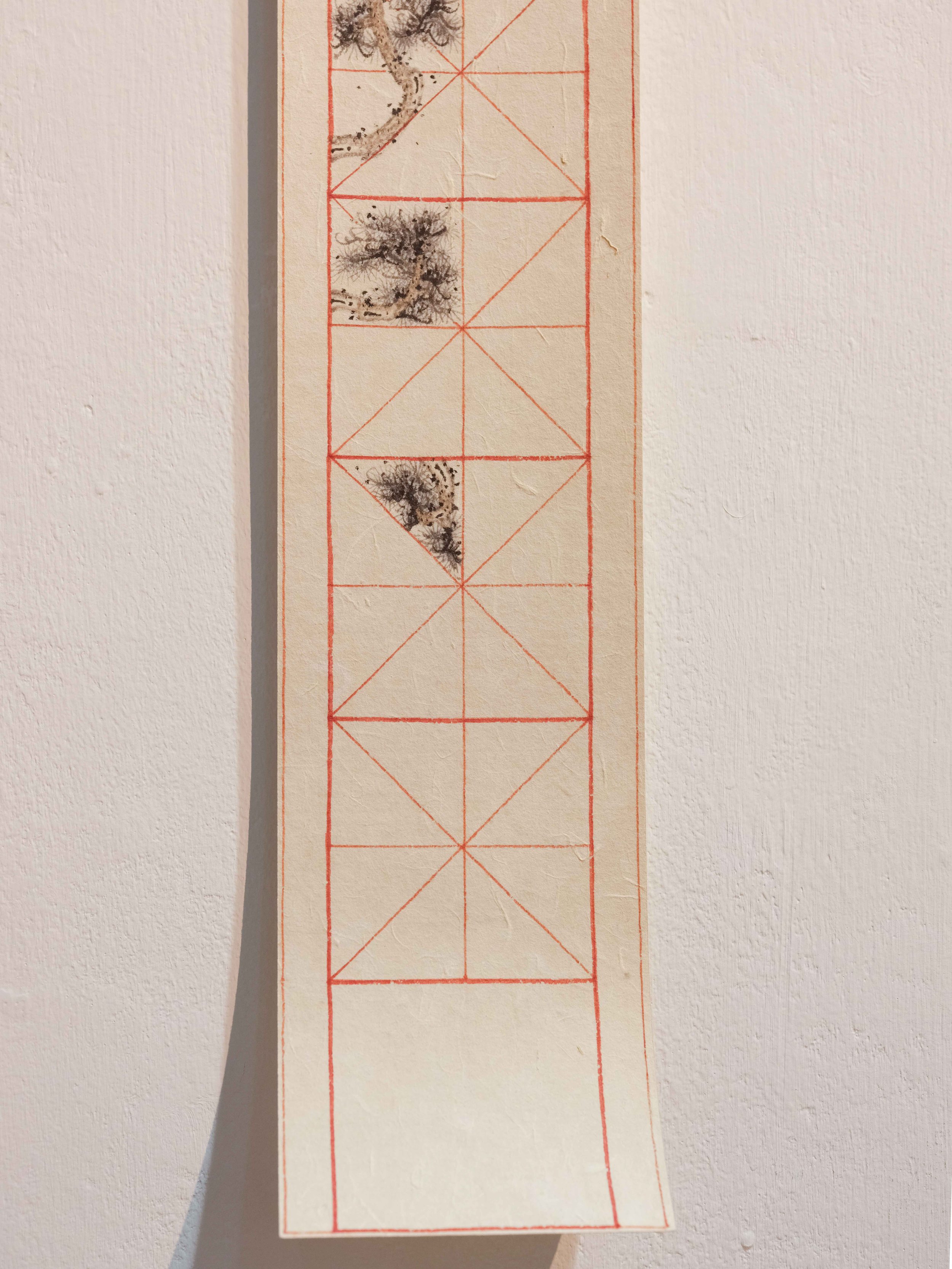









谷埔係個島? Is Kuk Po an Island ?
展覽介紹 Exhibition Statement
谷埔位於香港新界沙頭角旁的谷埔,是一個以姓氏為族群的客家村莊,從鹿頸到谷埔是週末遊人遠足的熱門路線。是次展覽"谷埔喺個島?”將以村民的視角出發,探索谷埔的多元風貌、獨特視覺和故事。從遊人眼中,谷埔是一條行山路線;然而對於當地居民而言,從水路來往沙頭角才是他們的日常生活之路,也是當年沙頭角內海和船灣東北海岸線的交通要站,令谷埔蓬佩的原因。
展覽分為三個部分:第一部將以水路(沙頭角至谷埔)為主軸,拆解景觀,從村民視角闡述碼頭、海洋和船隻對當地居民的重要性;其次,以谷埔建築為主題,描繪荒廢建築物周圍樹木生長的情況,強調樹木以及人對建築的支撐意義;最後,以谷埔建築的舊瓦片組成故事書,繪上原稿紙格,宛如揭開屋簷下一幕幕故事向觀眾展現。
Kuk Po is a Hakka village located near Sha Tau Kok in the New Territories of Hong Kong, known for its clan-based community. The route from Luk Keng to Kuk Po is a popular hiking trail for weekend visitors. The exhibition ‘Is Kuk Po an Island?' will explore the diverse facets, unique visuals, and stories of Kuk Po from the perspective of its residents. While outsiders view Kuk Po as a hiking trail, for the locals, the waterway connecting Sha Tau Kok is their daily lifeline, serving as a crucial transportation hub between the Inner Sea of Sha Tau Kok and the northeast coast of Chuenwan in the past, contributing to the prosperity of Kuk Po.
The exhibition is divided into three parts: the first part focuses on the waterway (from Sha Tau Kok to Kuk Po), deconstructing the landscape and highlighting the significance of piers, the sea, and boats to the local residents from the villagers' point of view. The second part centres on Kuk Po's architecture, depicting the growth of trees around abandoned buildings to emphasise the significance of trees and human beings in supporting the structures. Lastly, the exhibition uses old tiles from Kuk Po's buildings to create a storybook, with original manuscript paper grids, as if unveiling a series of stories under the eaves to present to the audience.
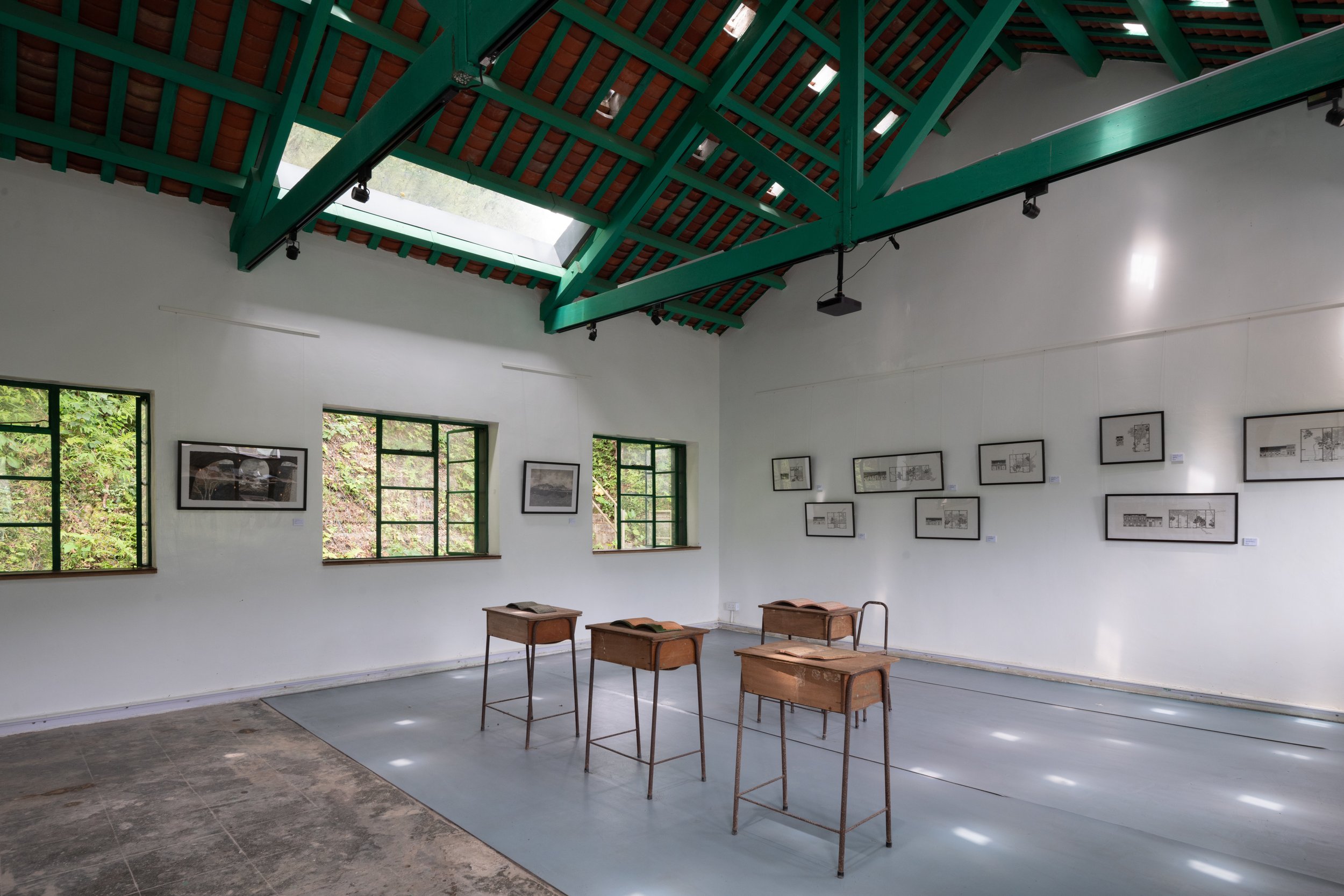
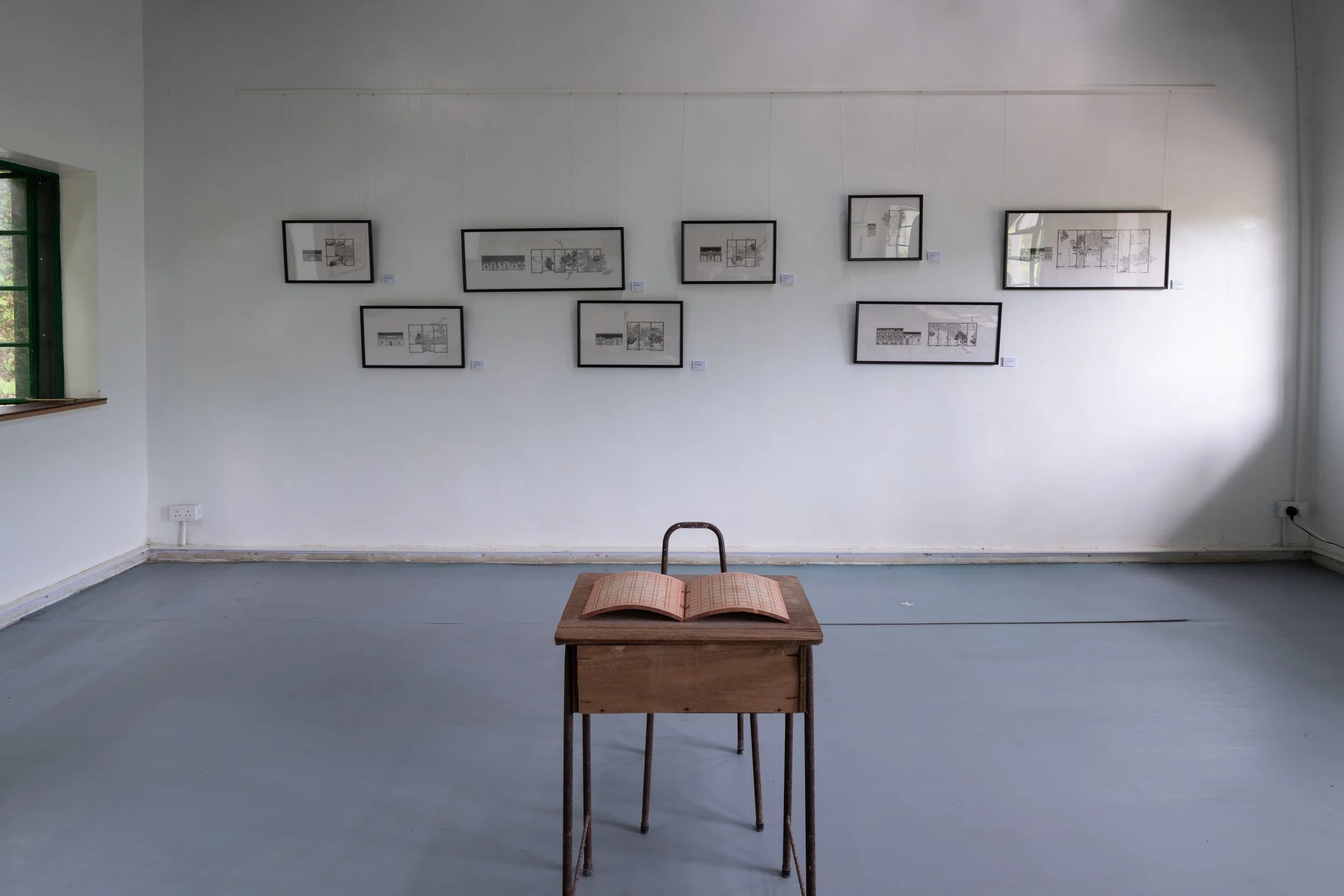

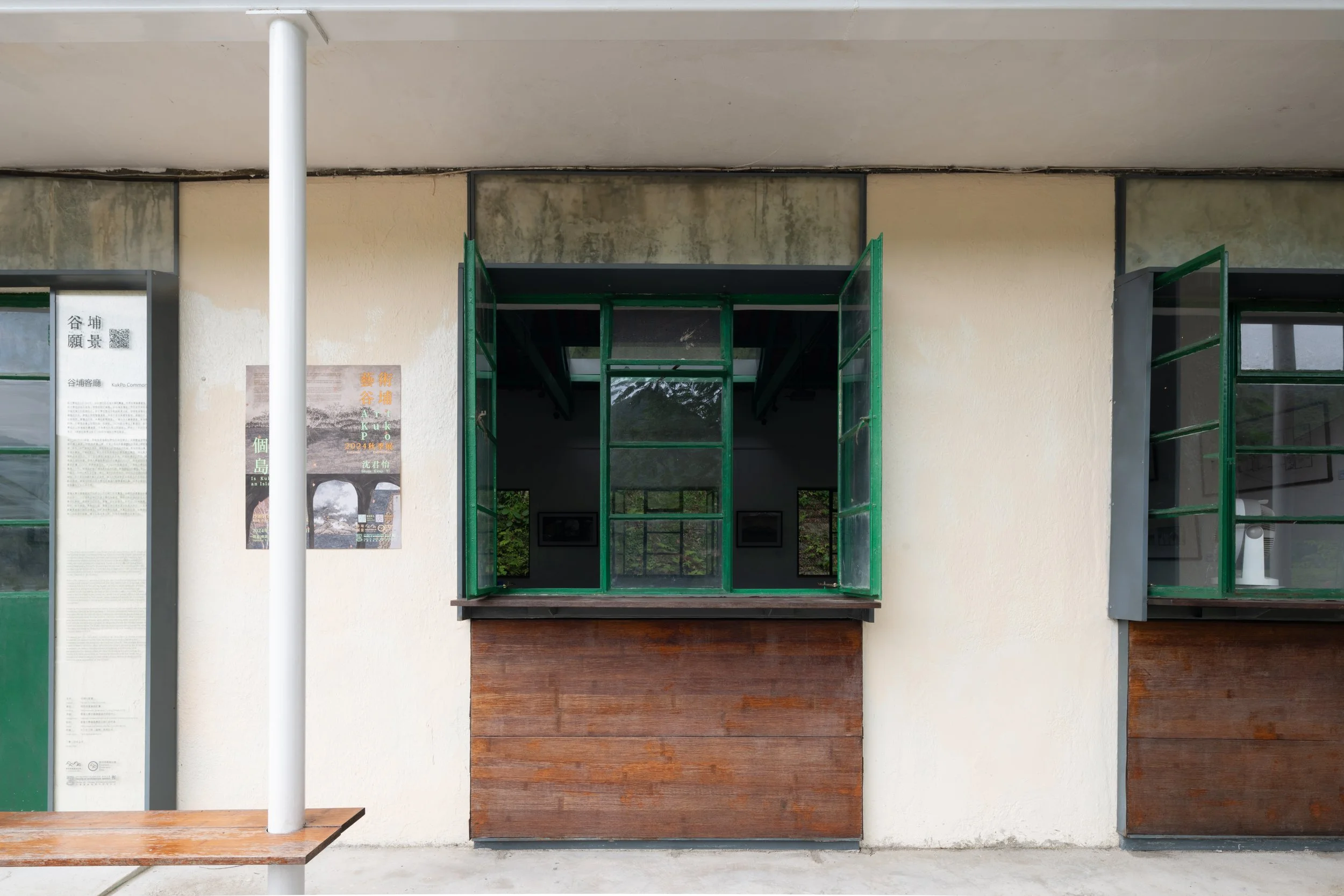

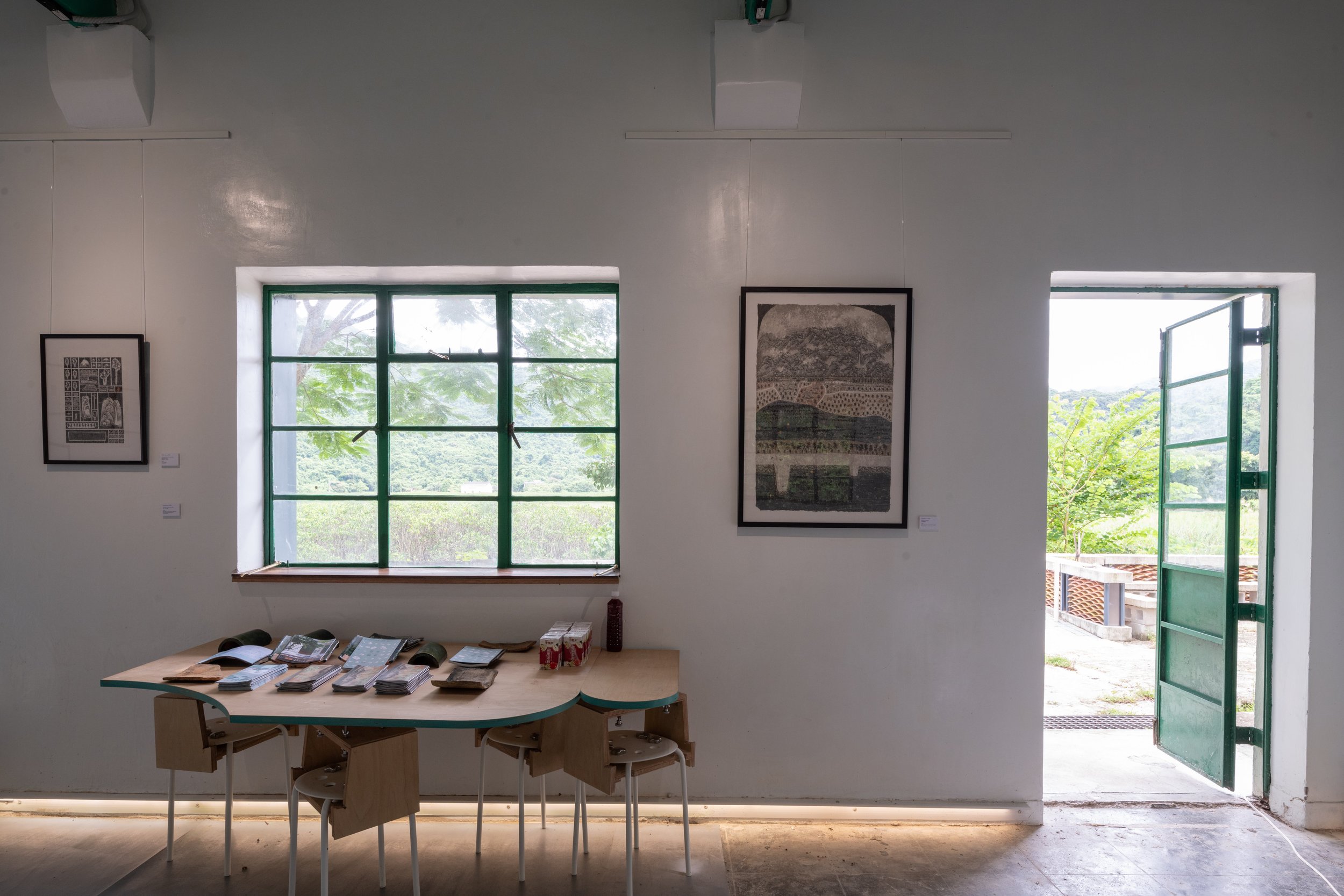



西貢海藝術節 Sai Kung Hoi Arts Festival
畫梓 Island Log | collaborative project with MADE
作品介紹 Artwork Statement
景觀不僅是一個物理或視覺實體,也可以是一個文化概念,因應個體背景的不同,對同一景觀的解釋和敍述可能會有很大的差異,表明景觀可以擁有多個敘述的可能,例如鹽田的景色,不同的人眼中可能會被演繹為鹽業、農田、景點、自然景觀、濕地等不同的故事。
一個木亭子在鹽田前的空地搭建,作品旨在建造一個閱讀景觀的空間。其頂部部分木瓦片由原位置塌下的朴樹製成,當中的木紋見證着這個地方的歷史;亭子的底部則延伸出一個平台,與旁邊的大樹、光影互動,讓觀眾在這天然乘涼的地方親歷當下。亭子創造了一個讓旅客歇息和閱讀故事的空間,作品記錄了島民與鹽田景觀的故事,亦鼓勵旅客在從亭子向外眺望時自由地創作屬於自己關於景觀的故事,讓觀者從島民的故事中得到屬於自己的解讀。
Landscape is not only a physical or visual entity but can also be a cultural concept. Due to different individual backgrounds, interpretations and narratives of the same landscape can vary greatly, indicating that a landscape can have multiple possible descriptions. For example, the view of a saltpan can be interpreted by different people as stories of salt production, farmland, tourist attractions, natural landscapes, wetlands, and so on.
In the artwork, a wooden pavilion is constructed in front of the salt field, aiming to create a space for ‘reading’ the landscape. The wooden tiles on the pavilion’s roof are made from the fallen Chinese Hackberry that was originally located in Yim Tin Tsai, and the wood grain bears witness to the history of this place. The bottom of the pavilion extends into a platform, interacting with the nearby trees and sunlight, allowing visitors to experience the present moment in this natural shaded area. The pavilion provides a space for visitors to rest and to read stories. The artwork records the stories of the island residents and the landscape of saltpan, landscape, while also encouraging visitors to freely create their own stories about the landscape as they gaze outward from the pavilion. This allows viewers to have their own interpretations while reading the stories of the island residents.
「南丫說:」Lamma Mia
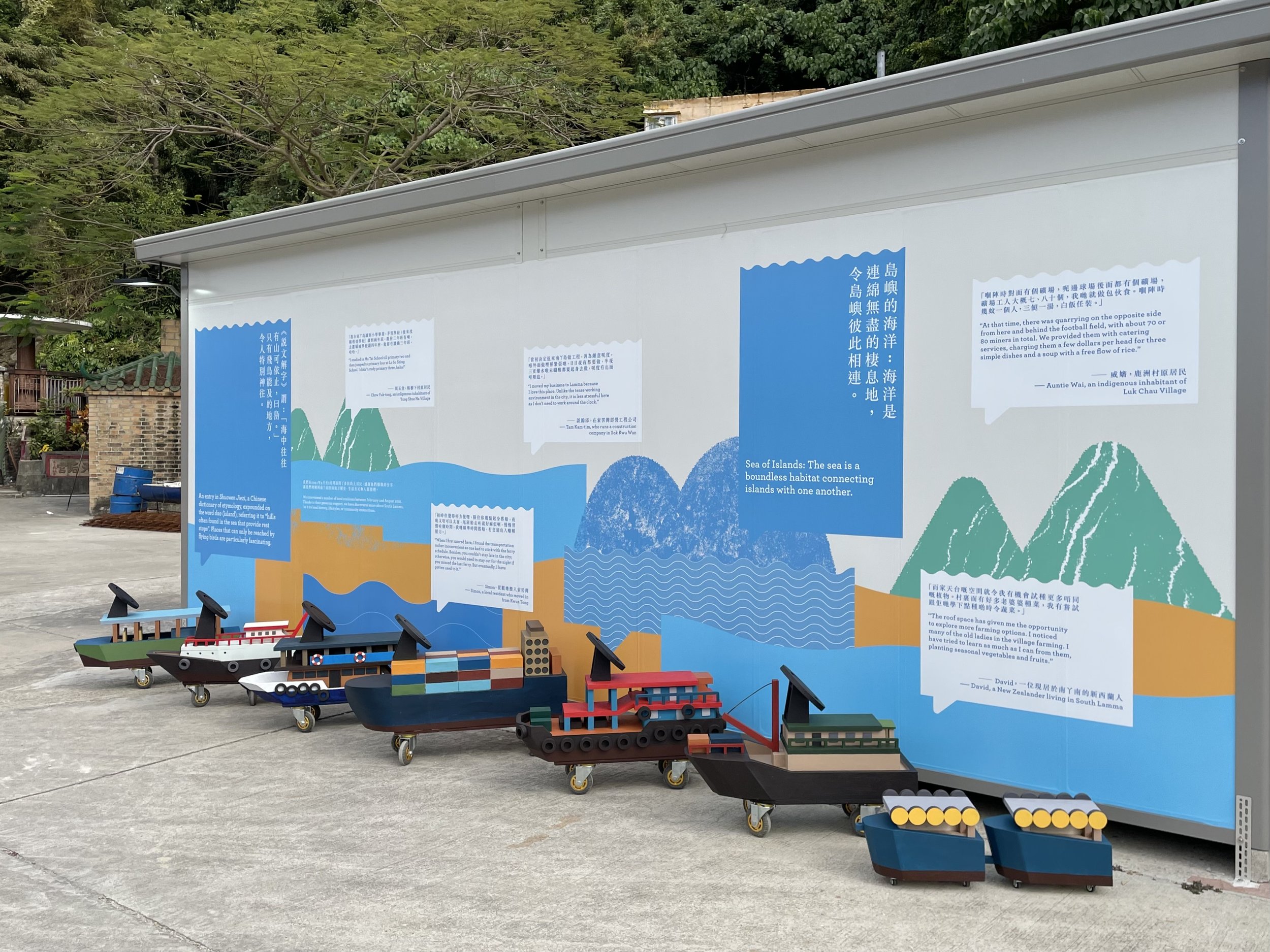

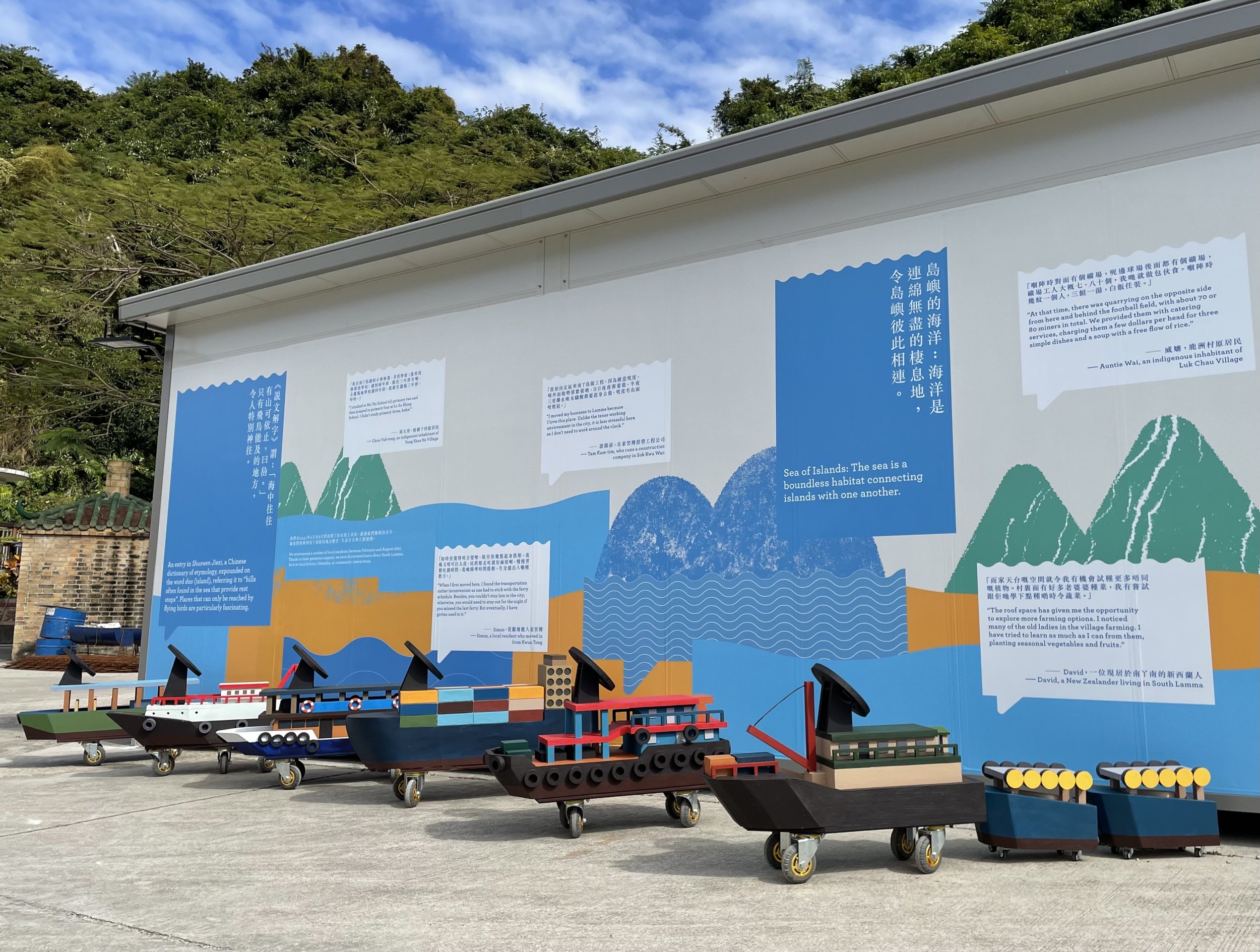



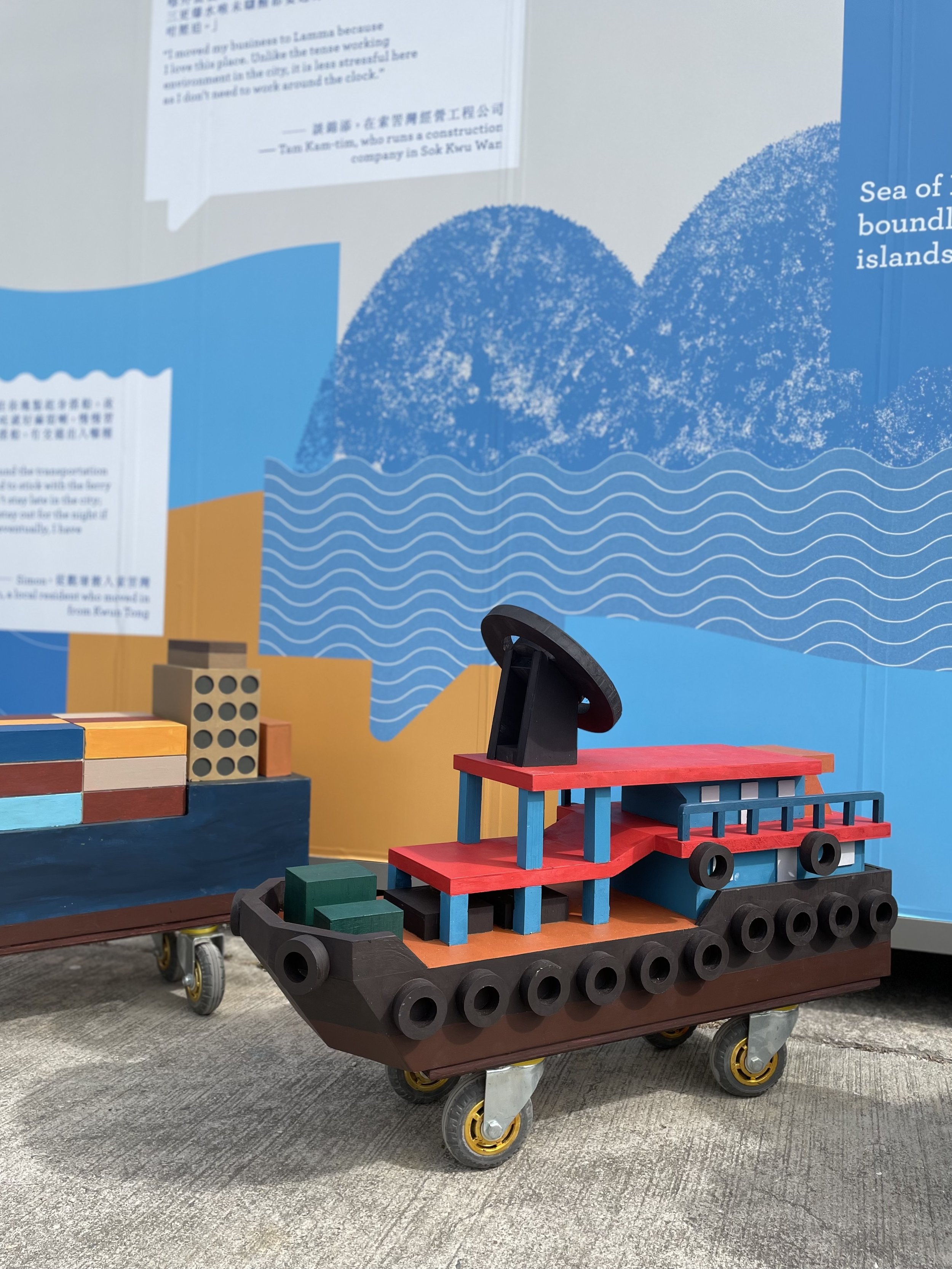
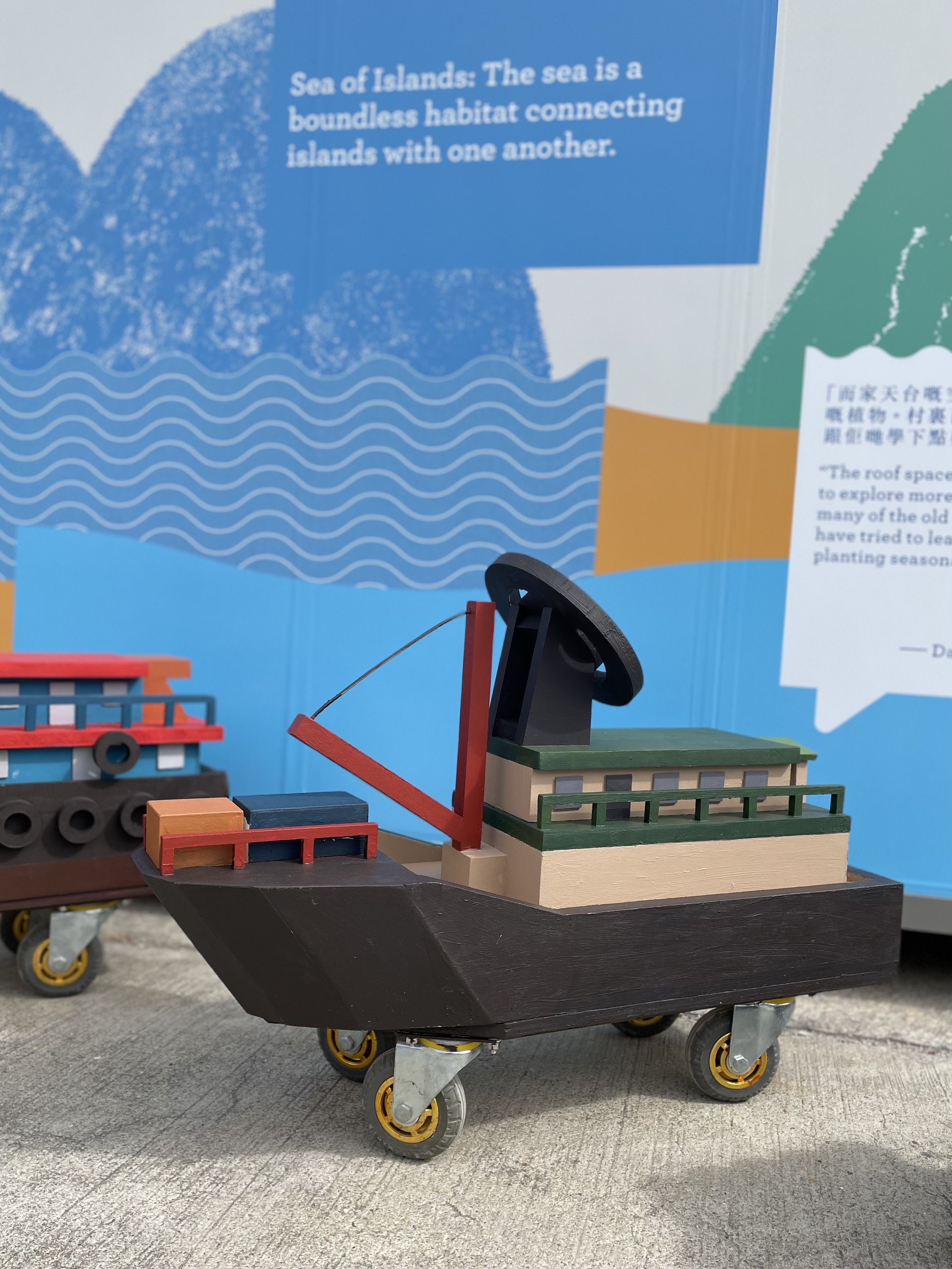

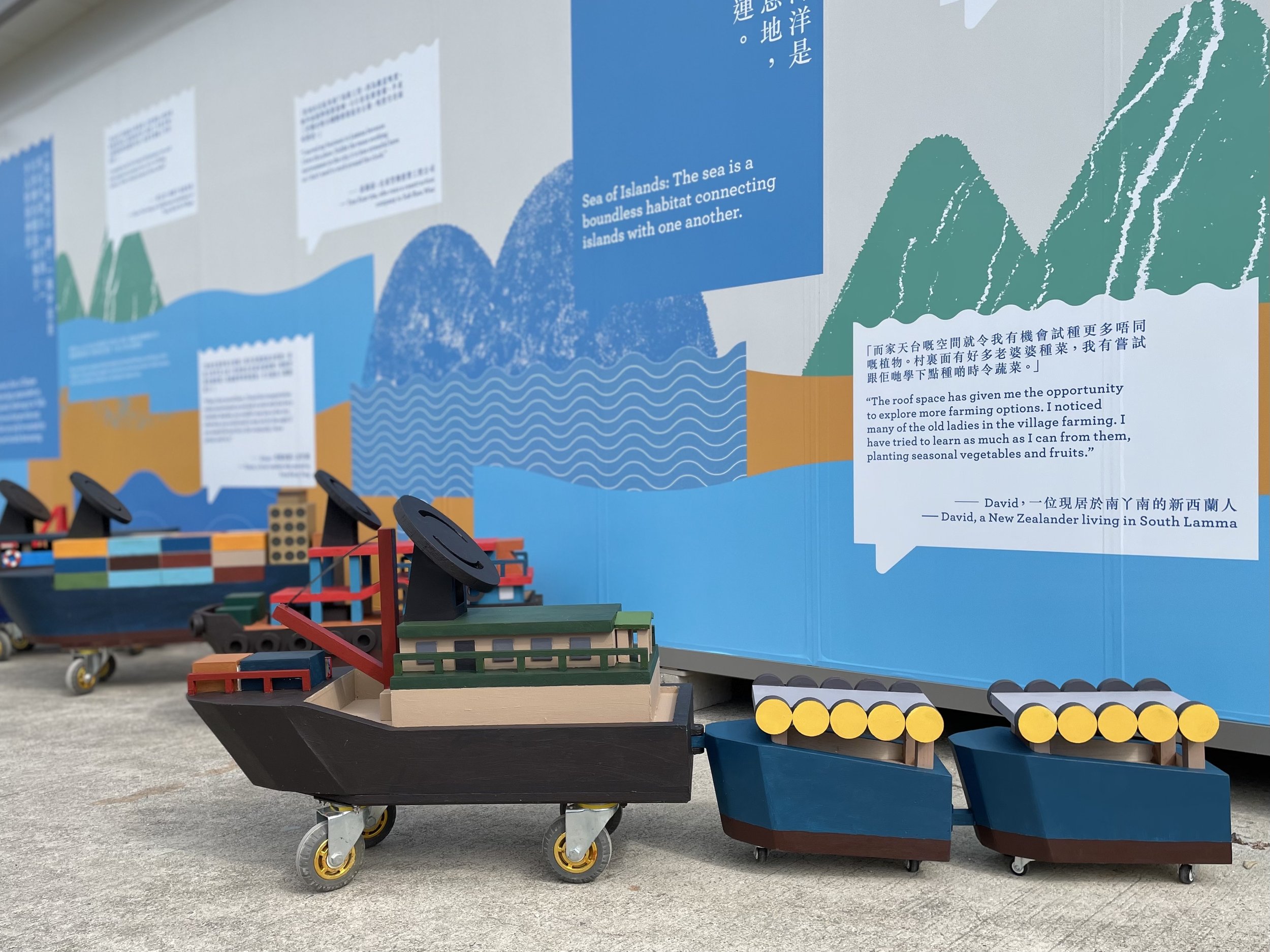







島上航遊 Sailing on the Island
作品介紹 Artwork Statement
穿梭於漁排的小艇、巨型的貨船、緩緩泊岸的街渡,南丫島的日常地景中總會出現各式各樣的船隻。藝術家沈君怡以此作為創作起點,參考了與島民生活有關的船舶樣式,製作出六「艘」形態各異的互動玩具船裝置,並邀請島上居民為船身着色。作品停泊在天后宮前的空地,讓路過的小朋友在天后娘娘的蔭庇下一嘗「駕駛」船隻的趣味,在遊戲中將整片空地化成大海,以想像力打破水限與陸界。
Lamma Island’s seascape is no stranger to all sorts of vessels: small boats plying between the fish rafts, huge container ships, and ferries docking at the piers. After referencing styles of vessels pertaining to the daily lives of the islanders, artist Shum Kwan-yi created installations of six different forms of interactive toy vessels and invited the residents to colour them. These pieces are ‘moored’ at the forecourt of the Tin Hau Temple so that children passing by can try their hand at piloting a boat under the eye of Tin Hau, turning the entire space into an imaginative sea.

